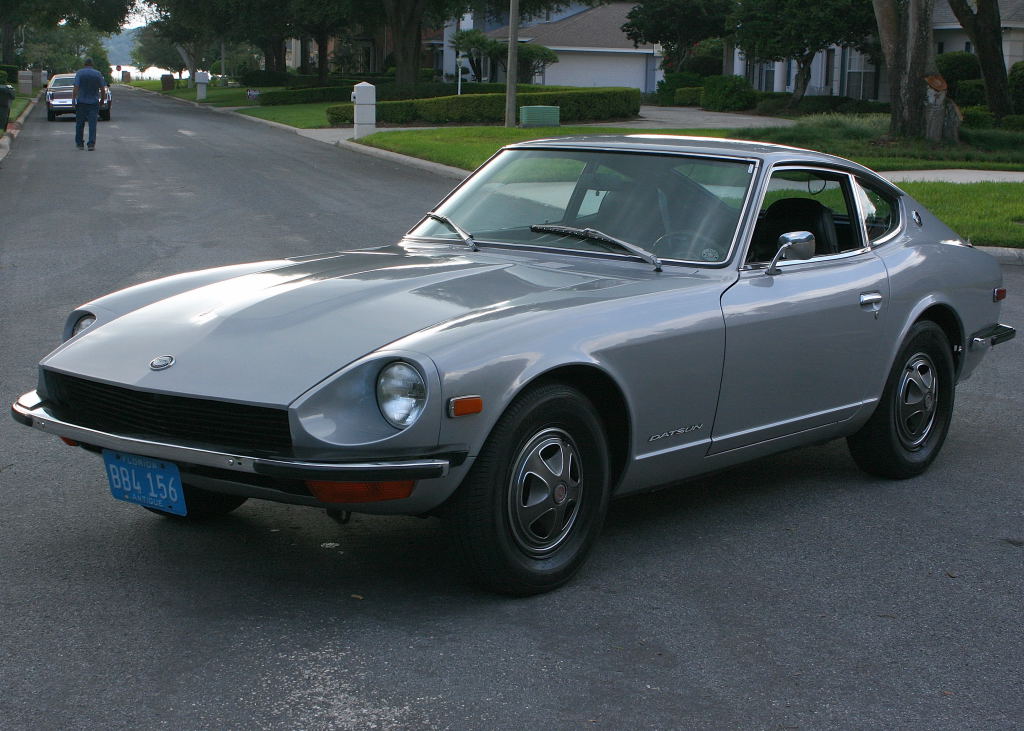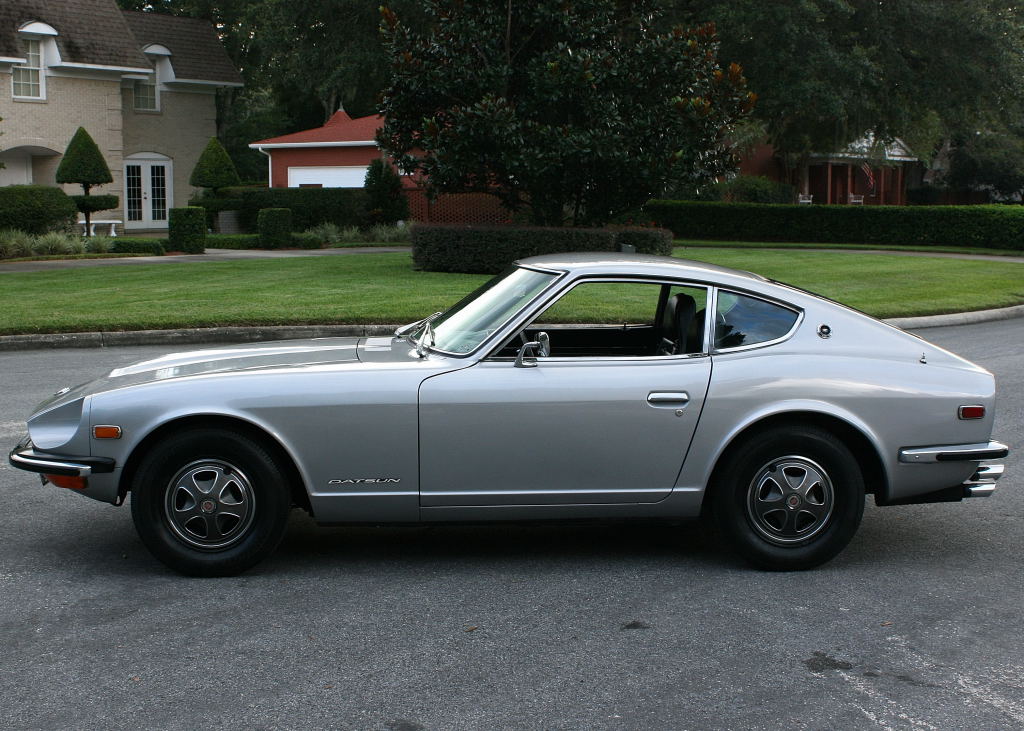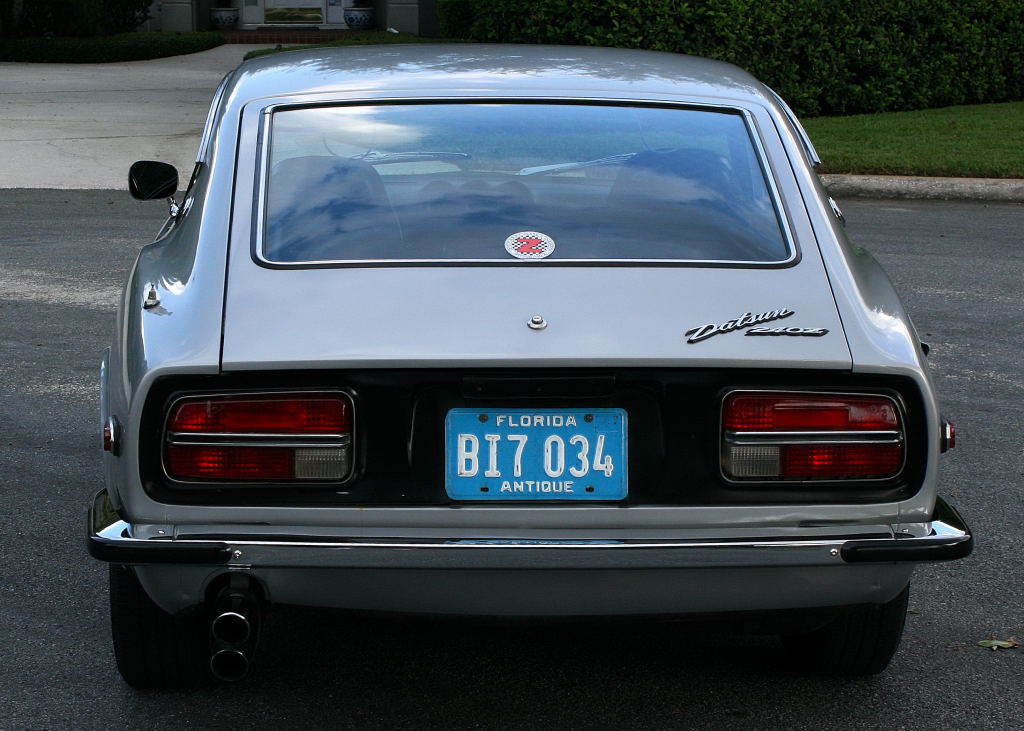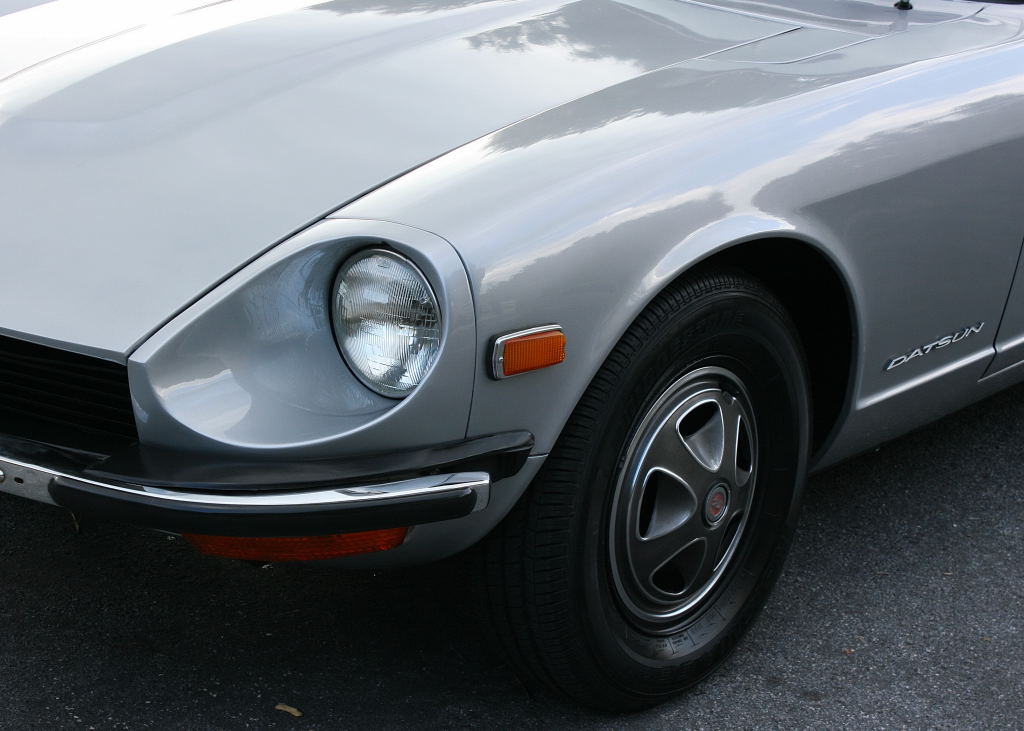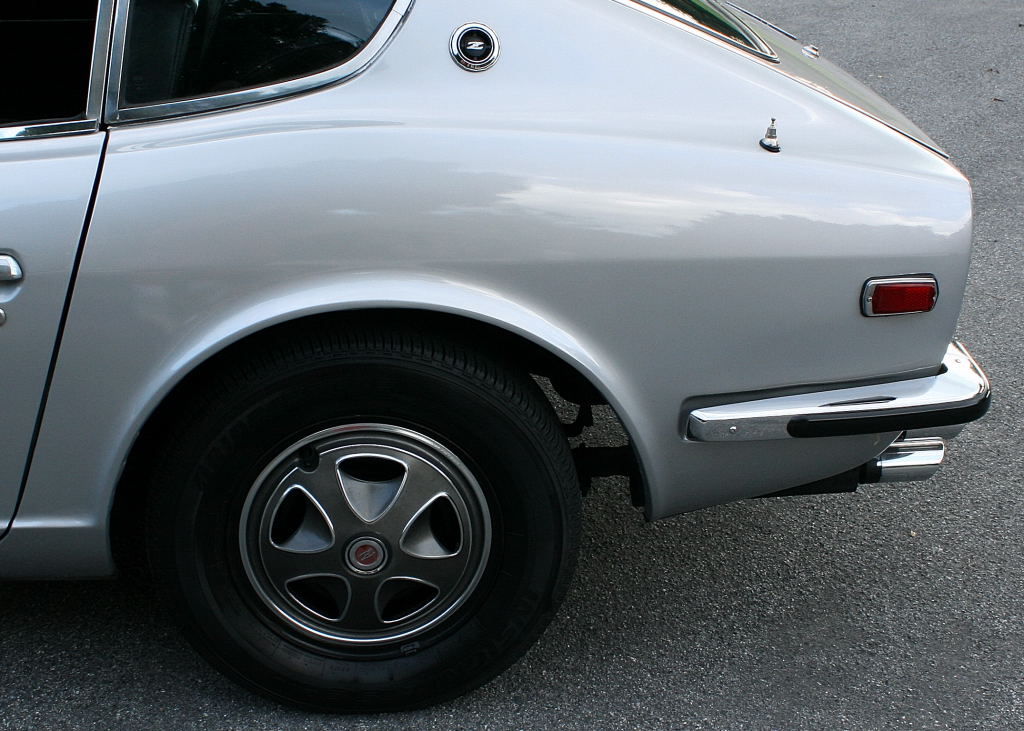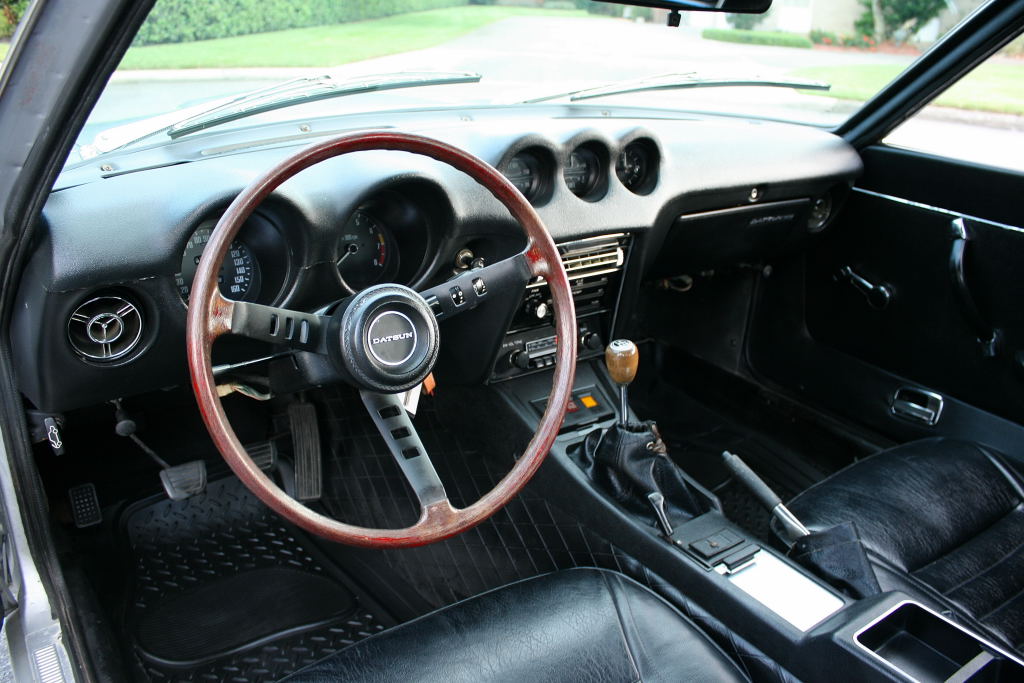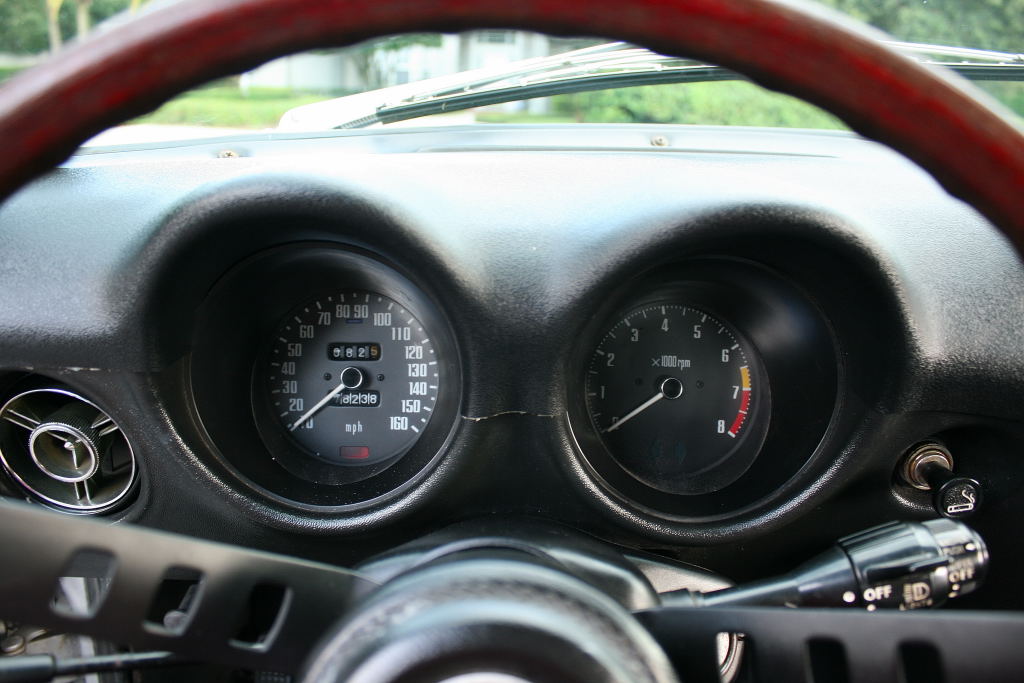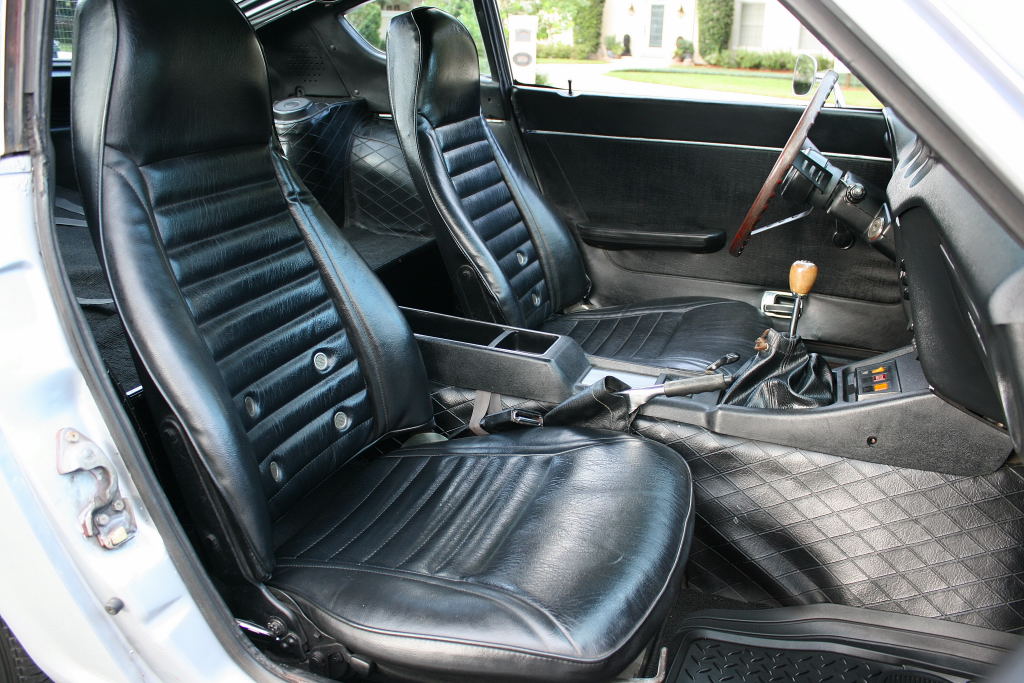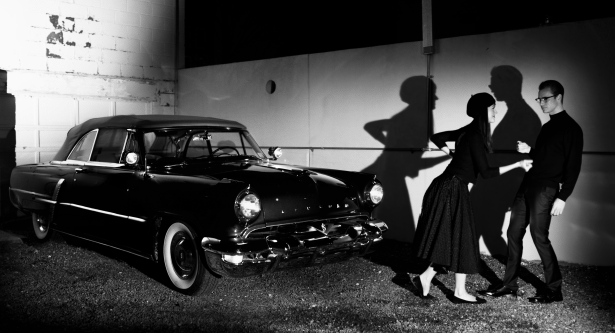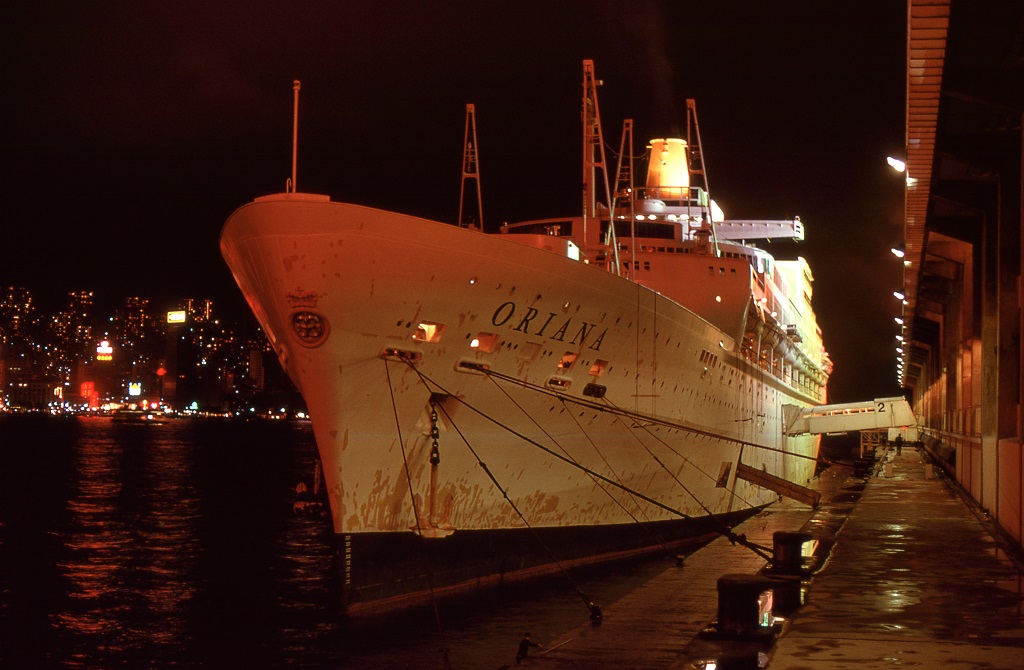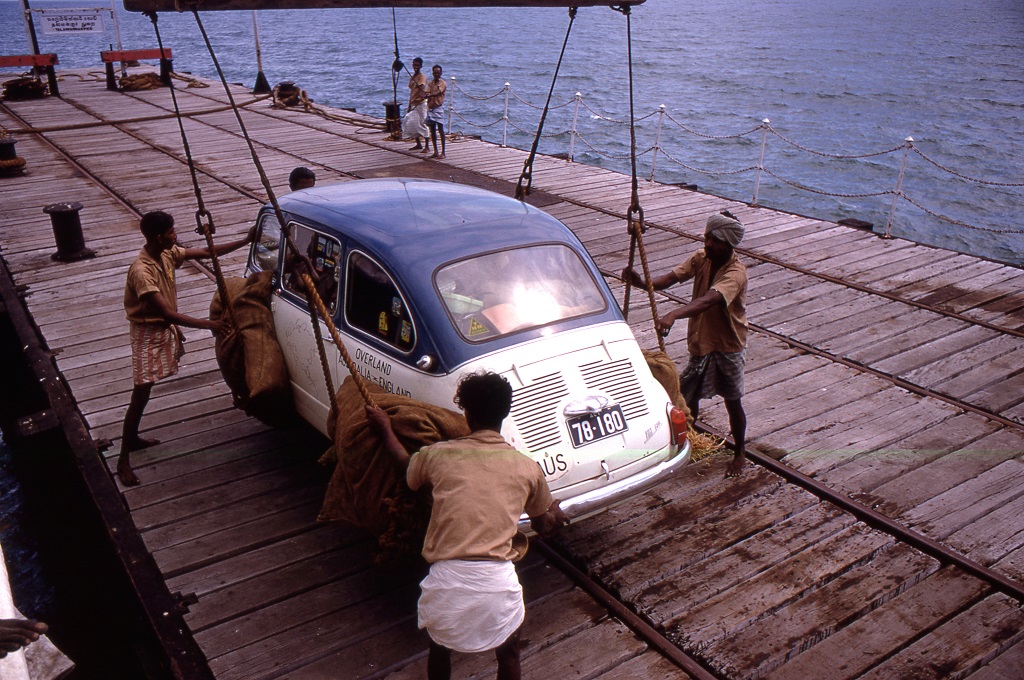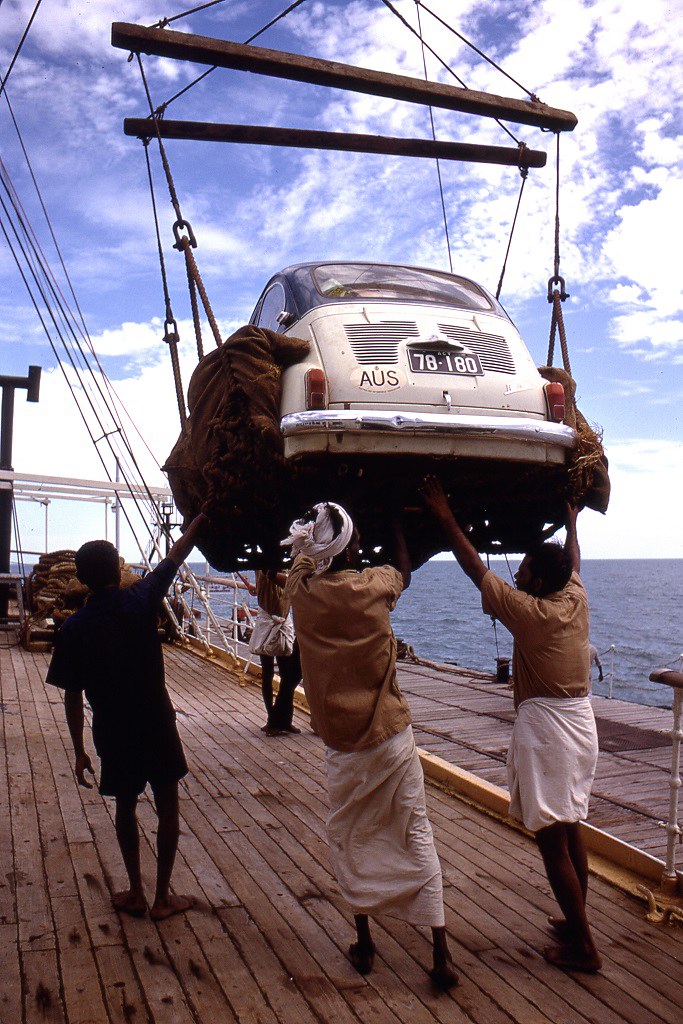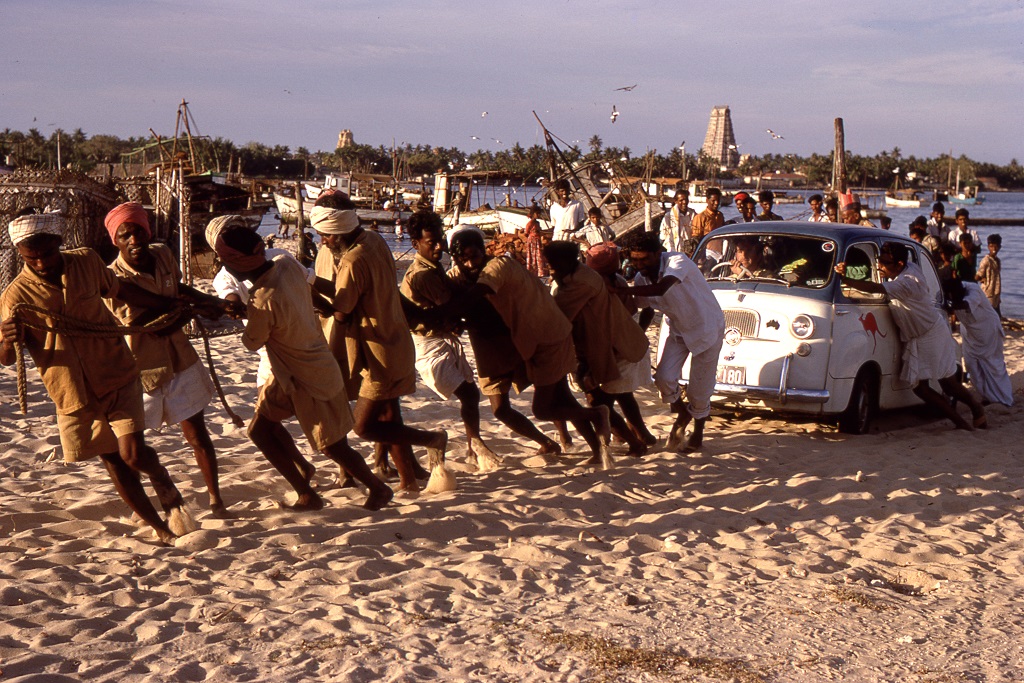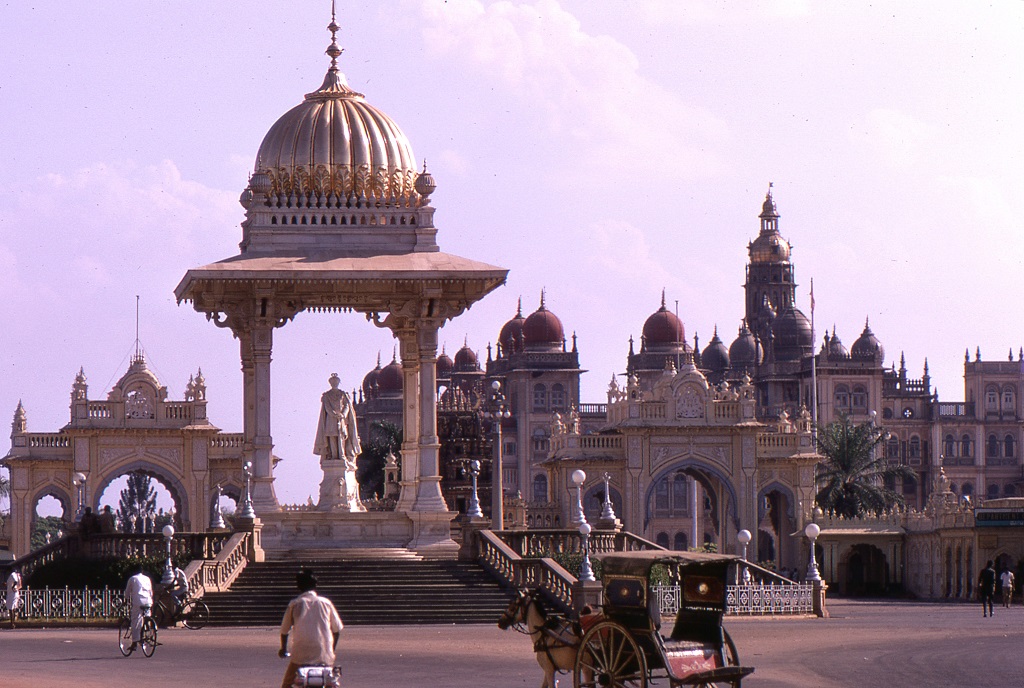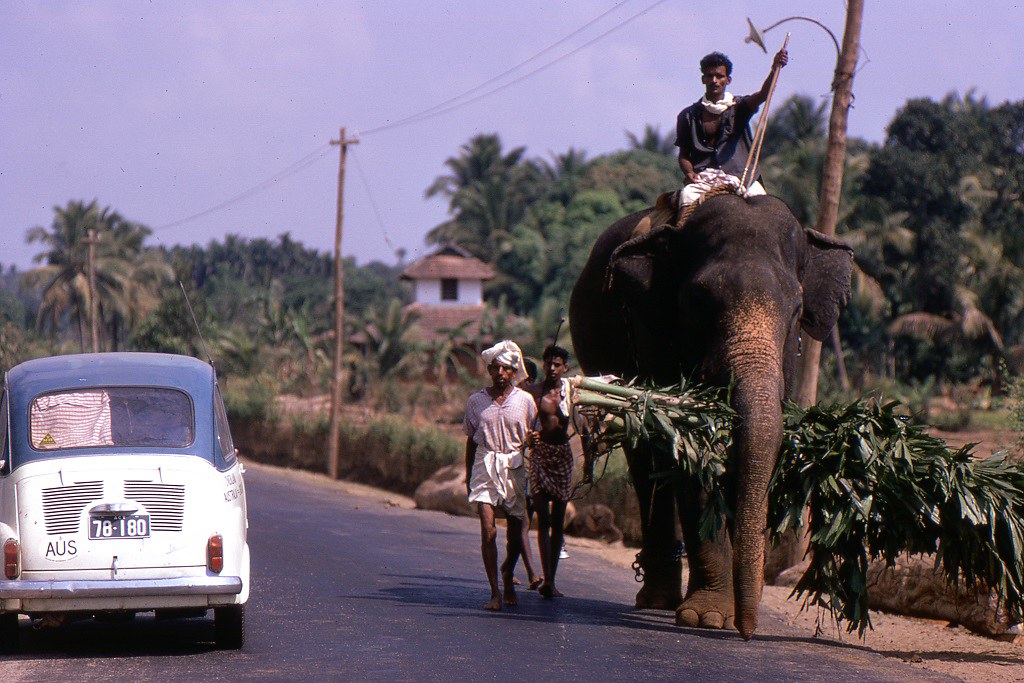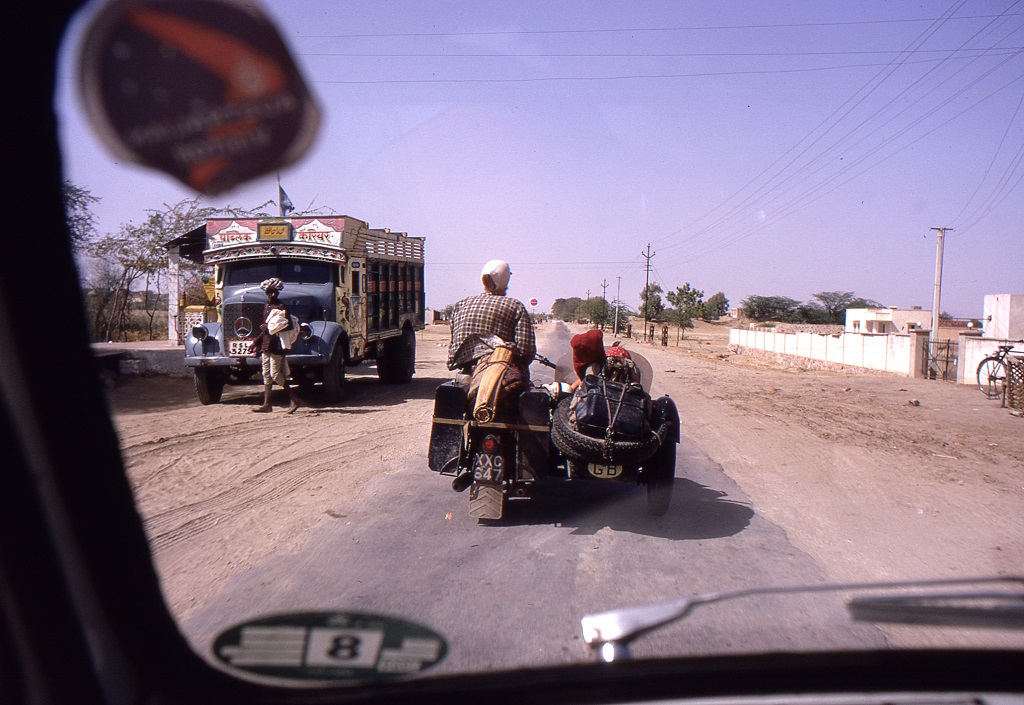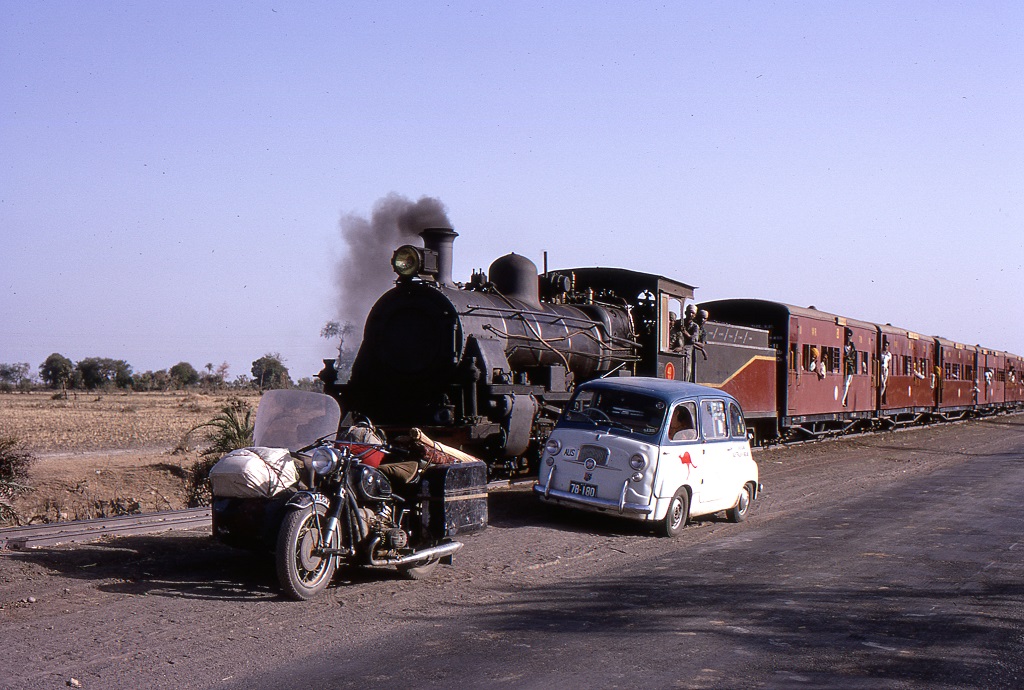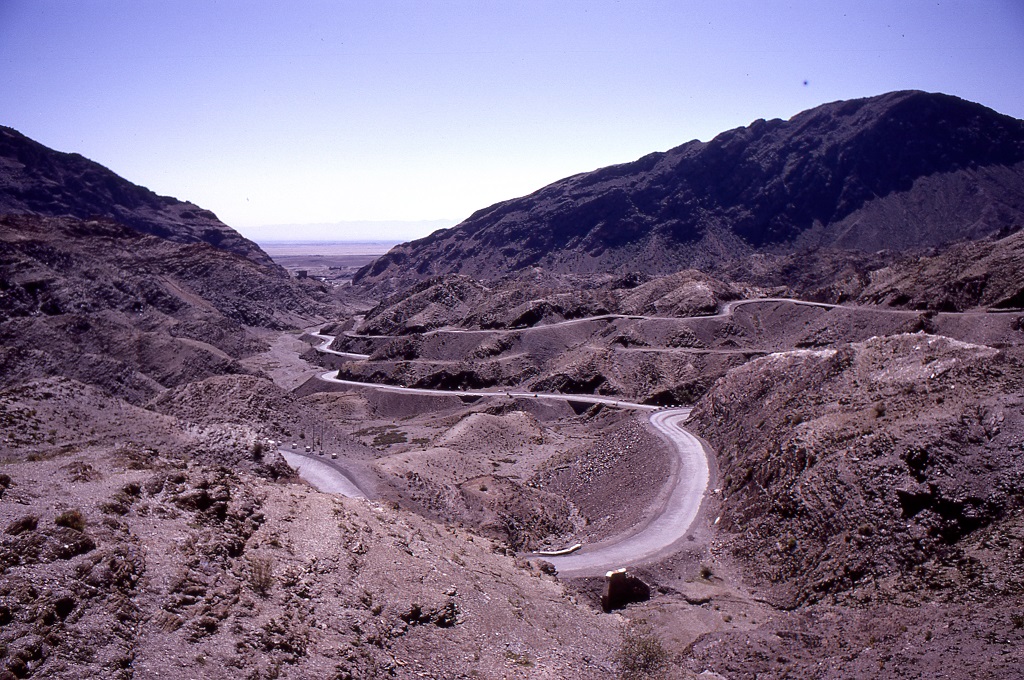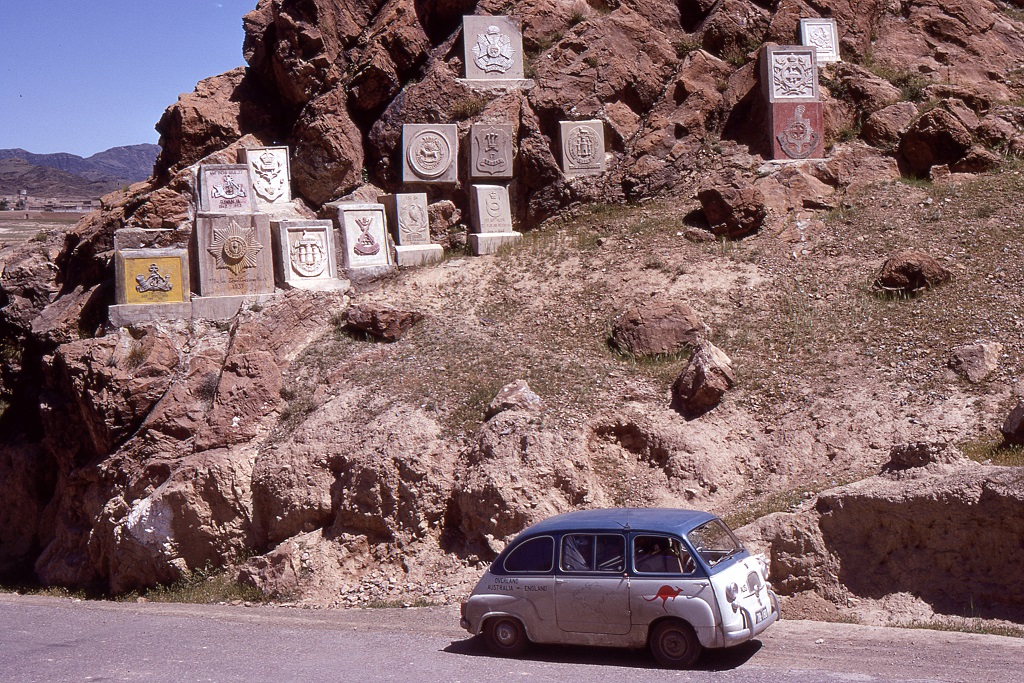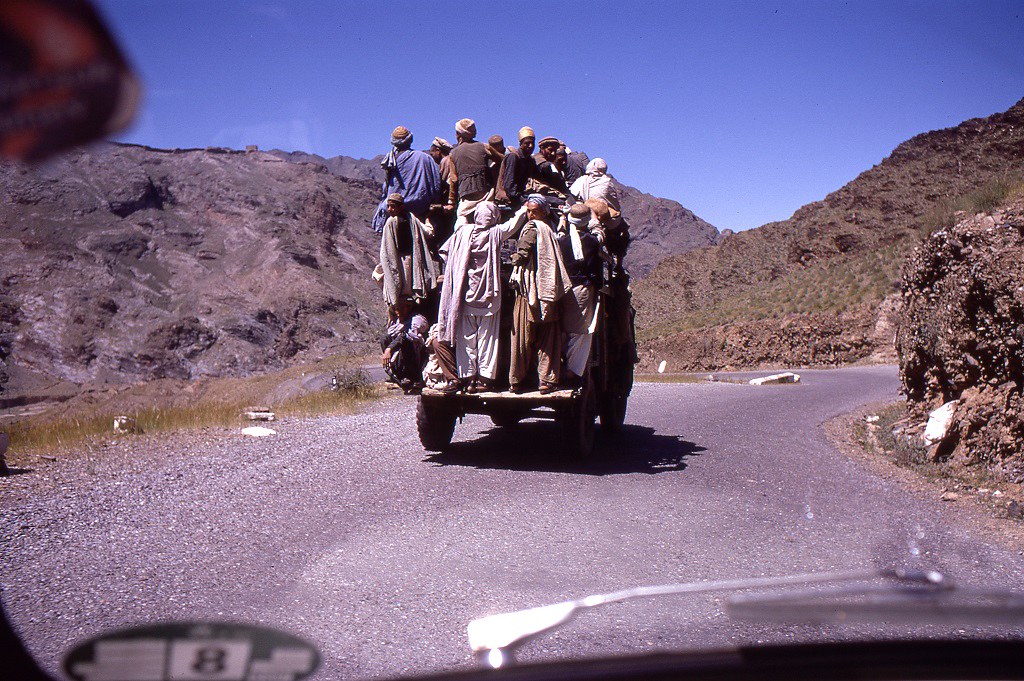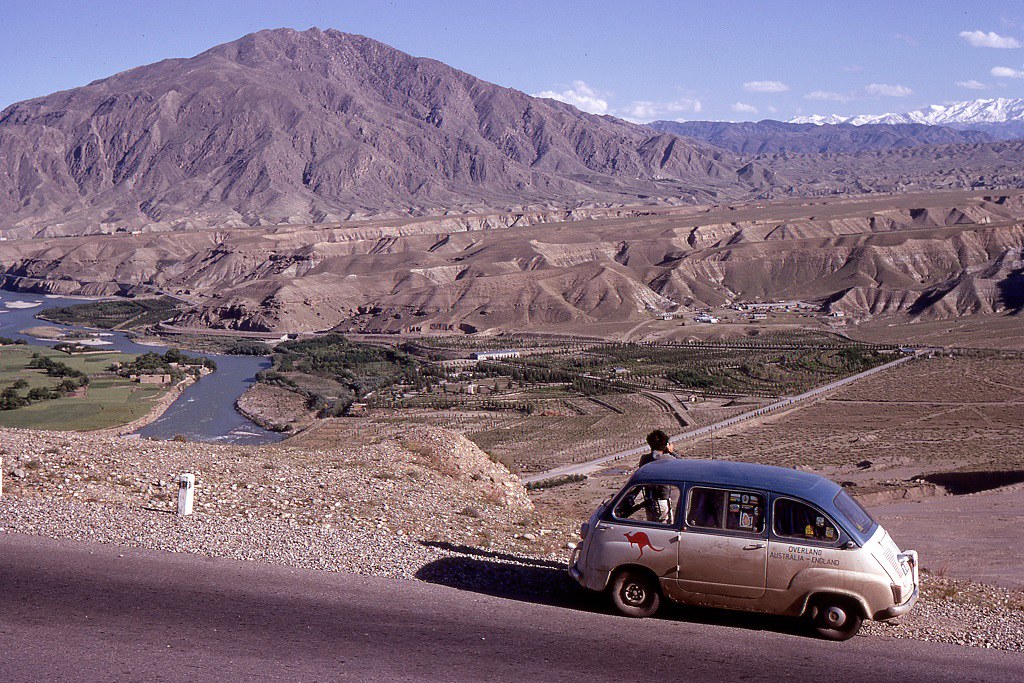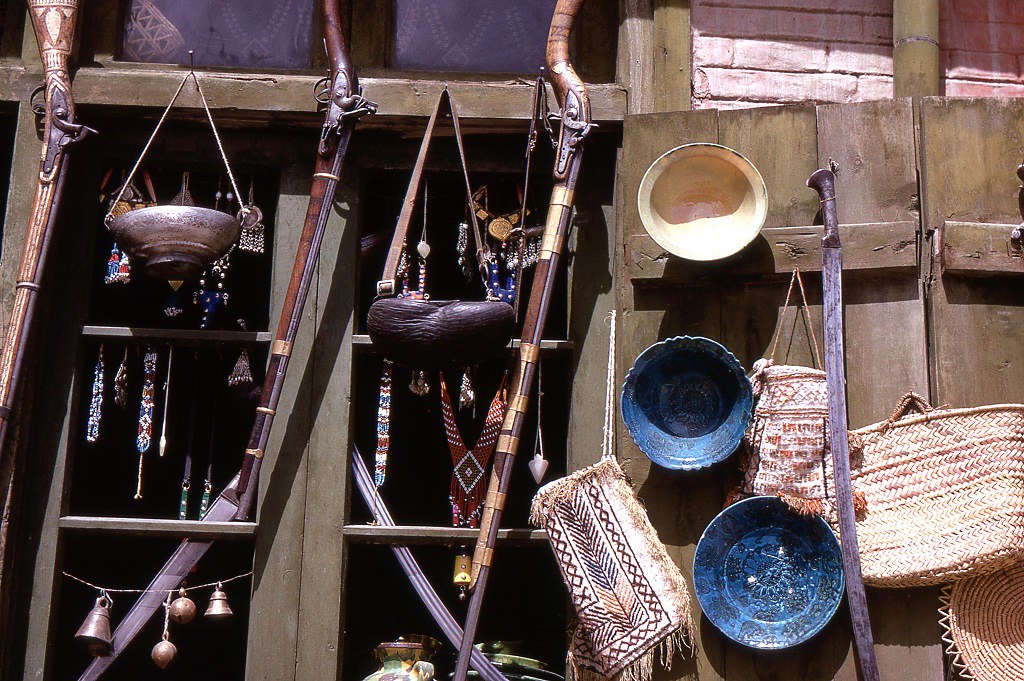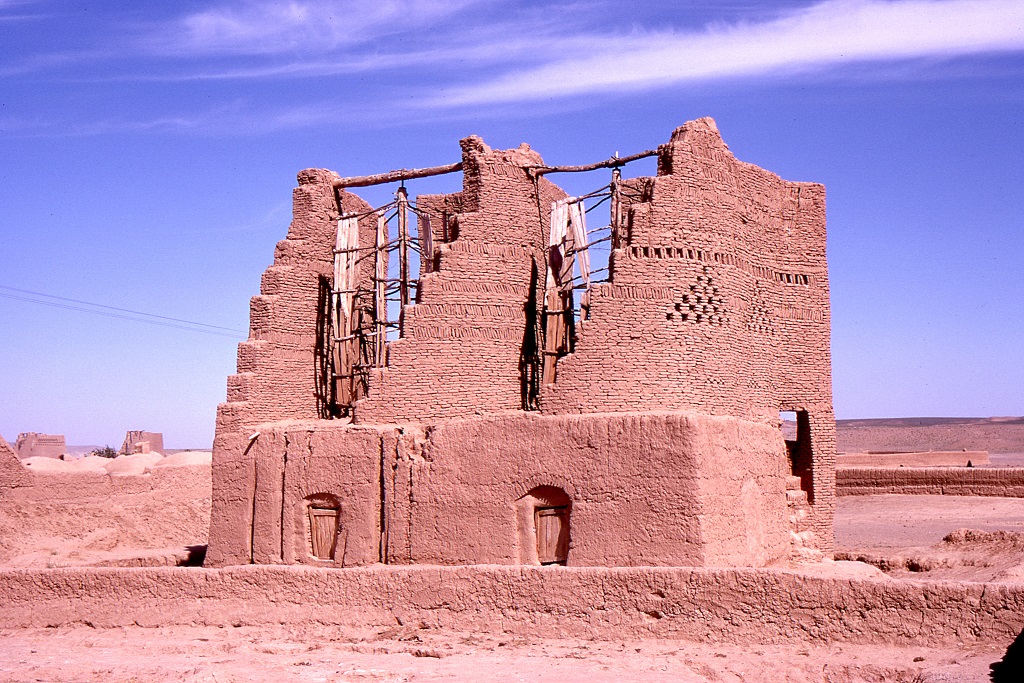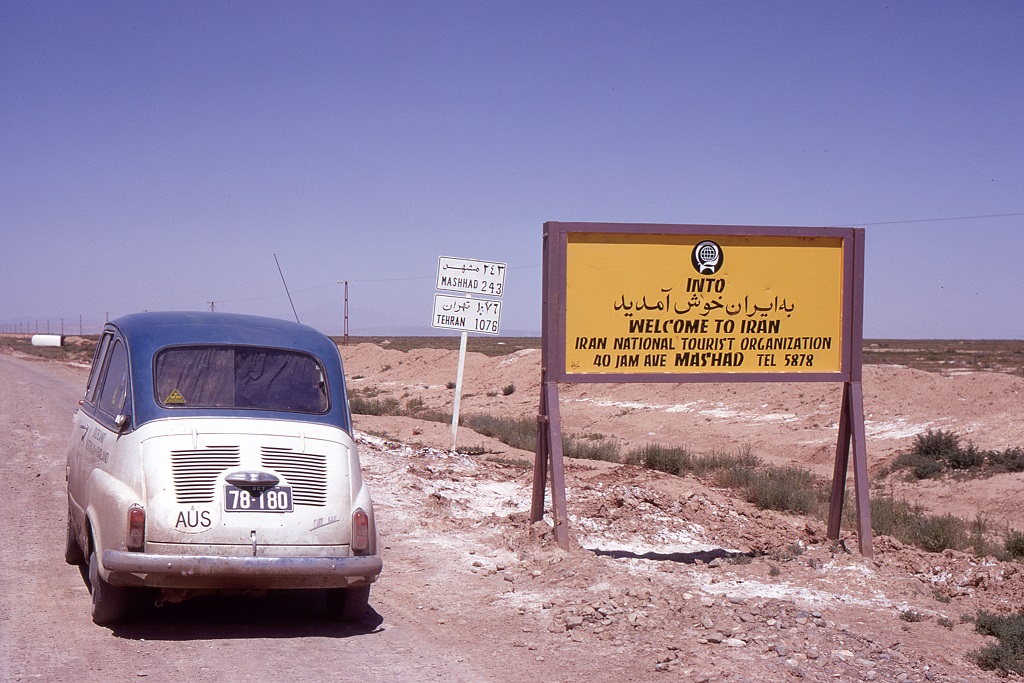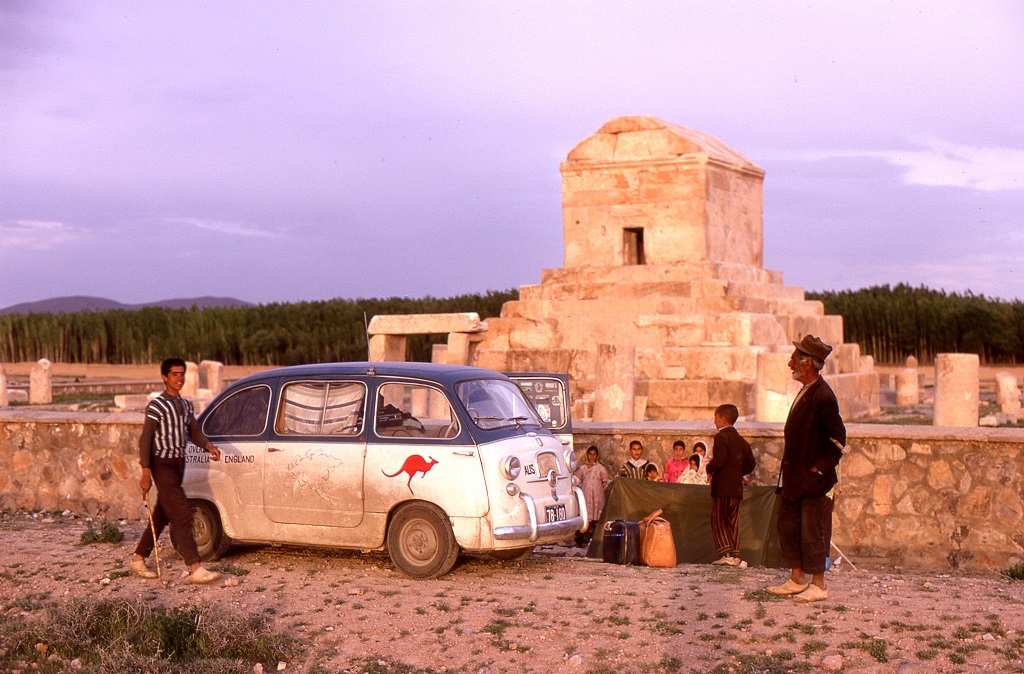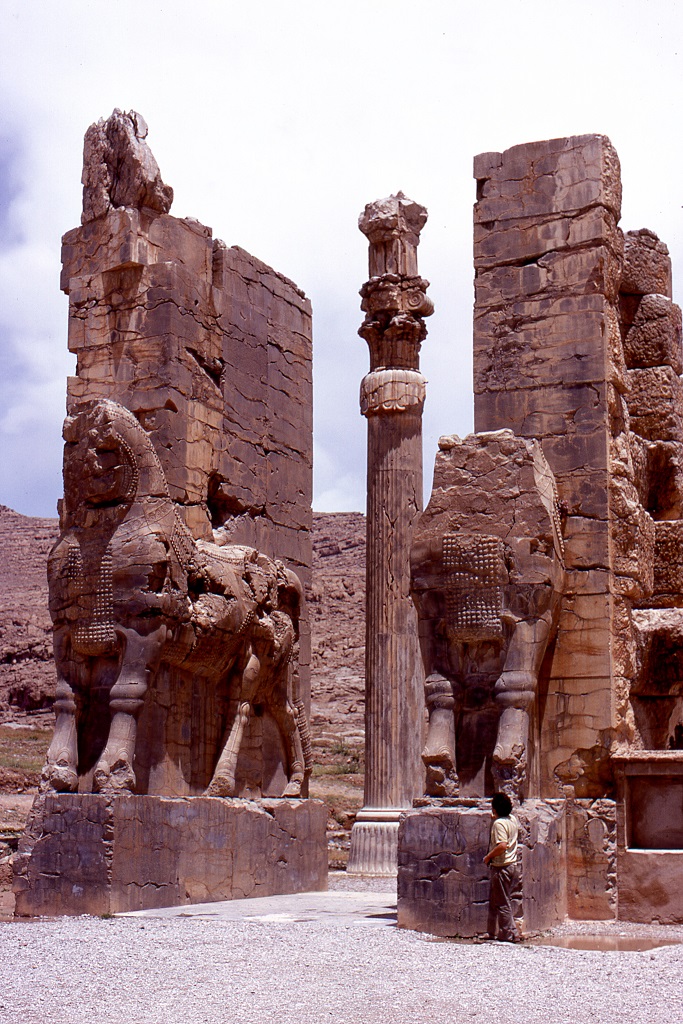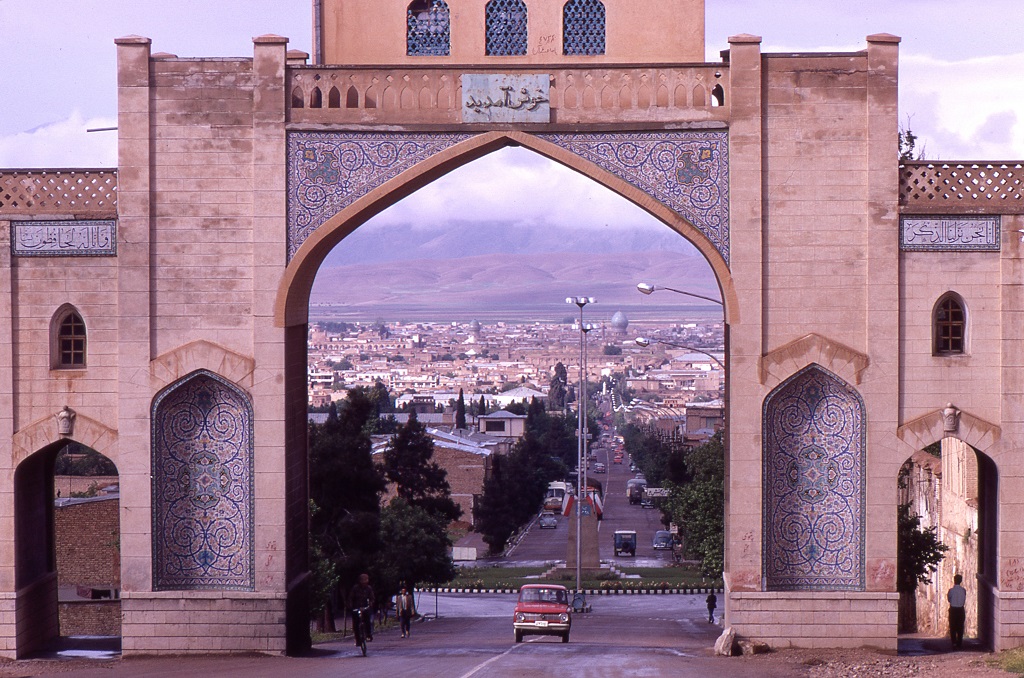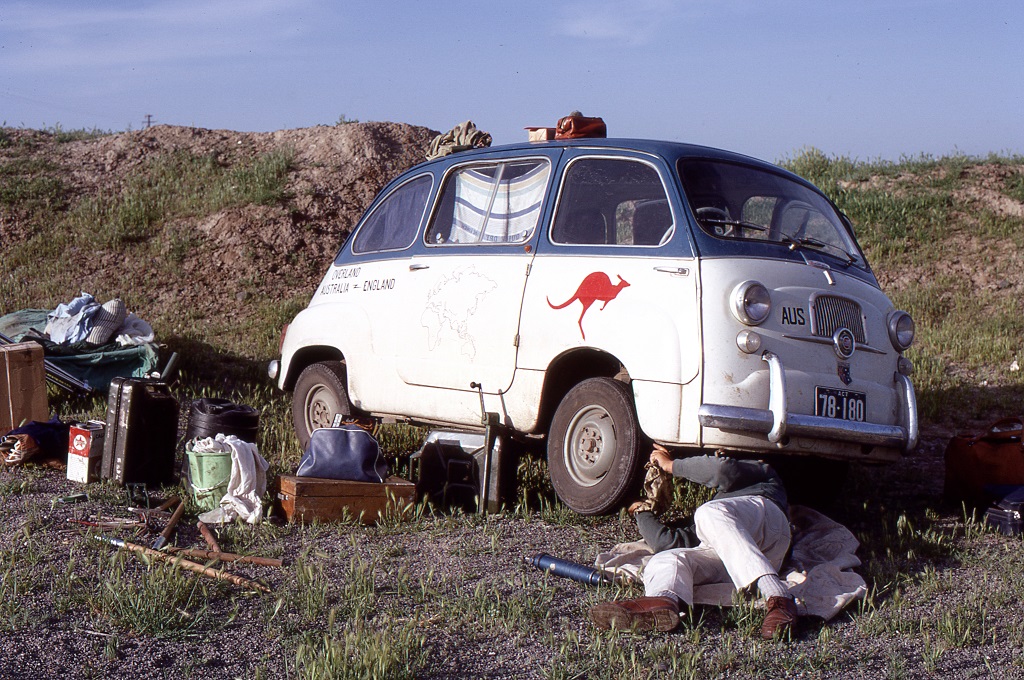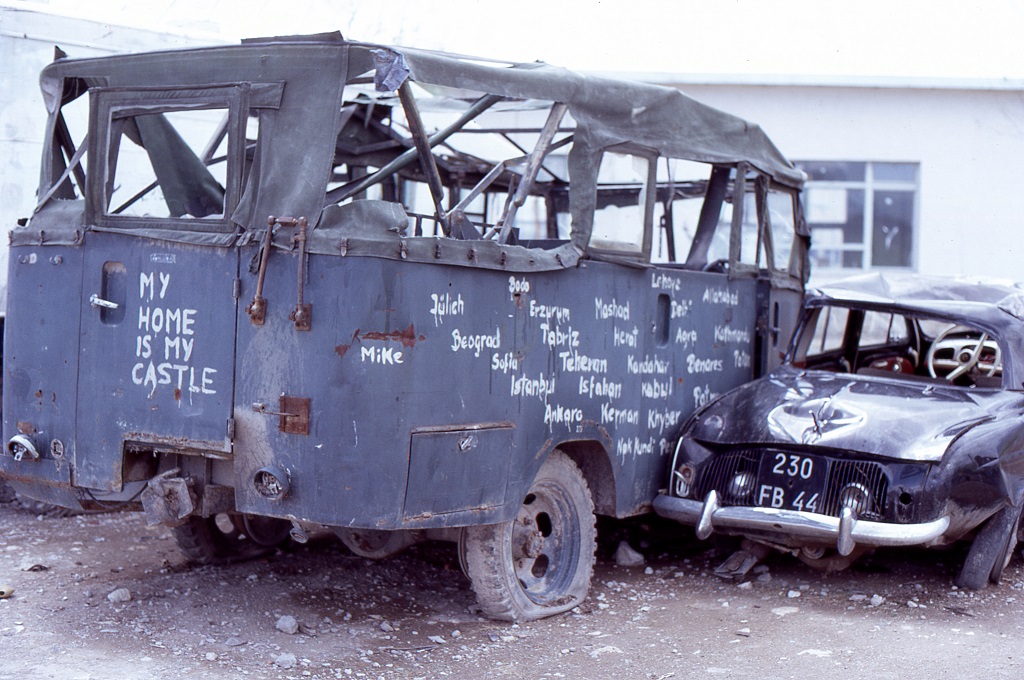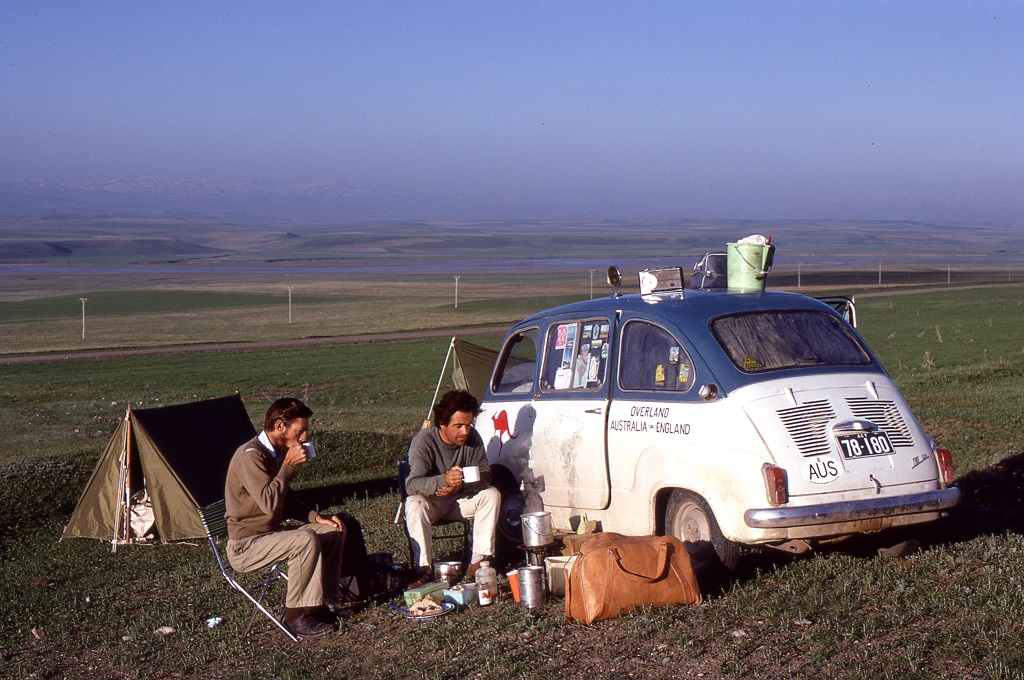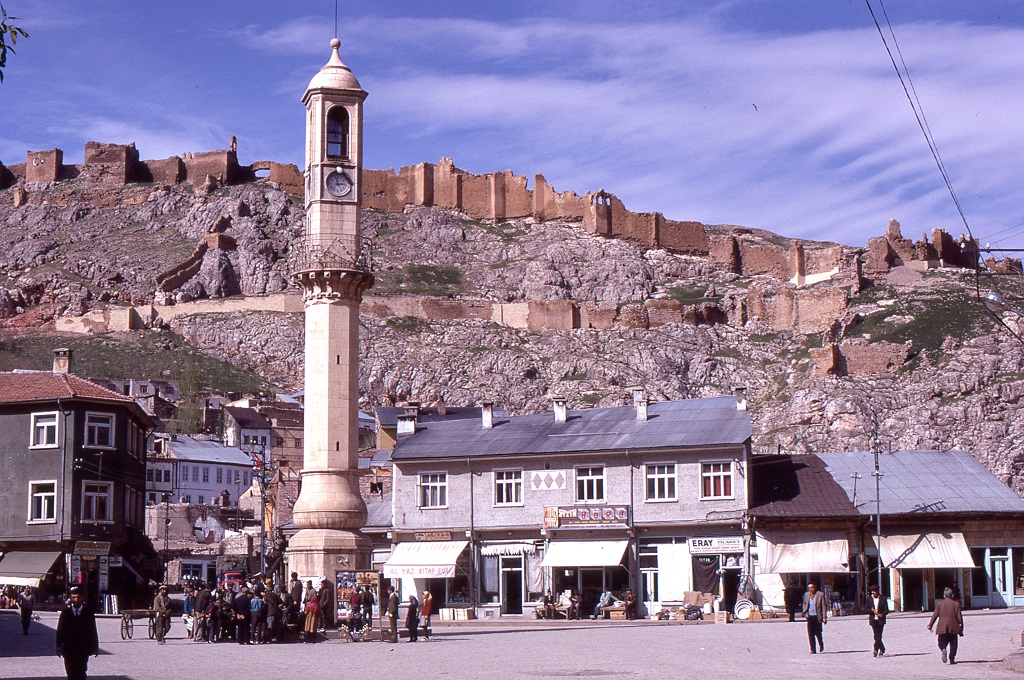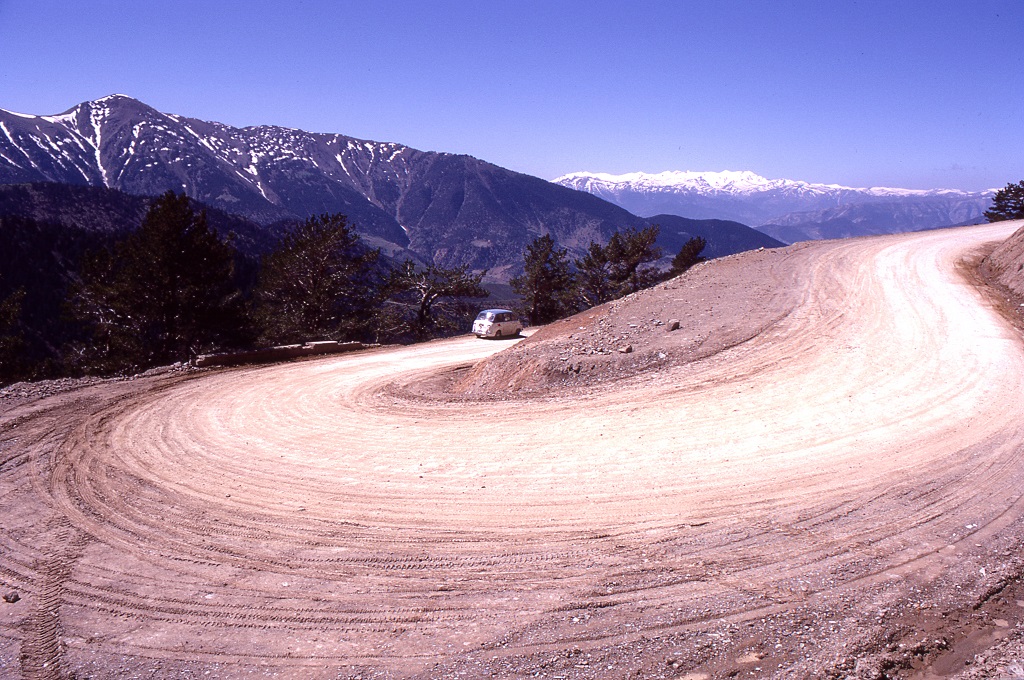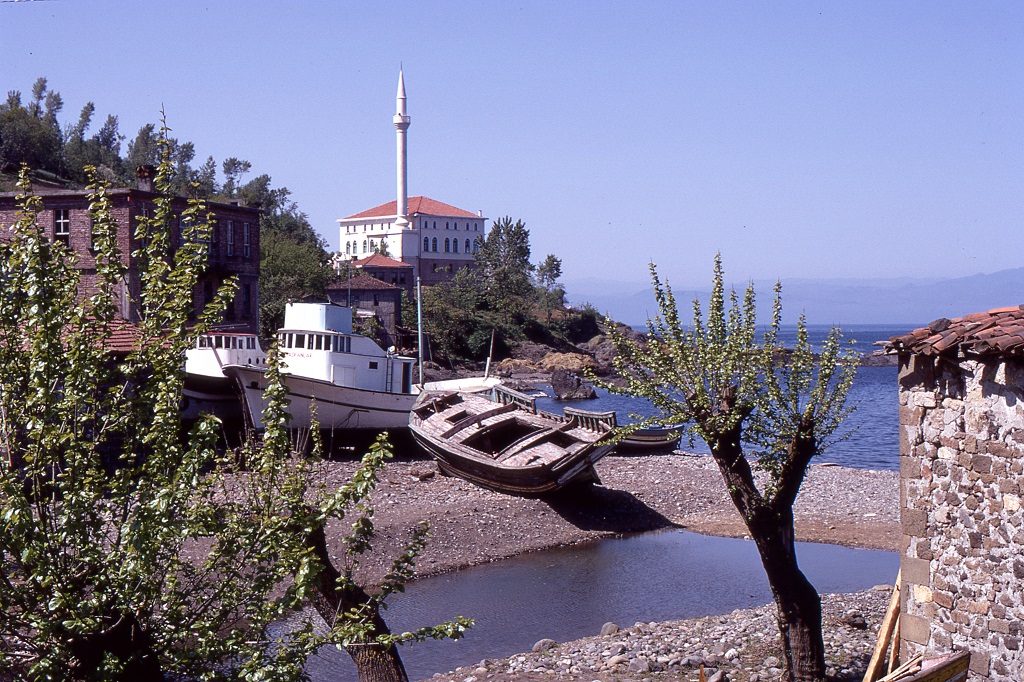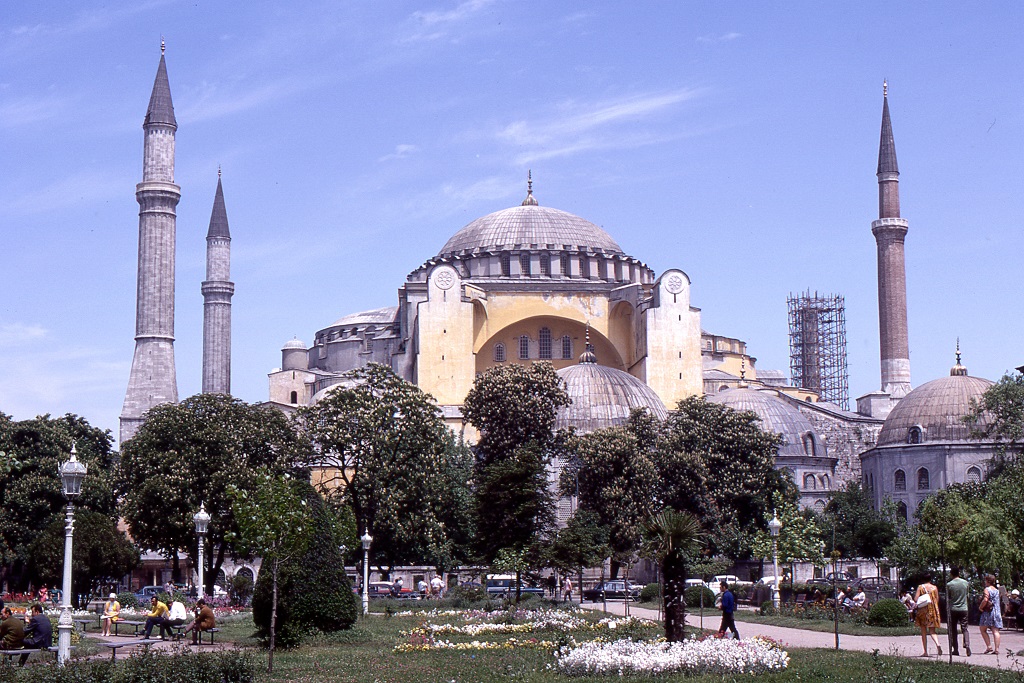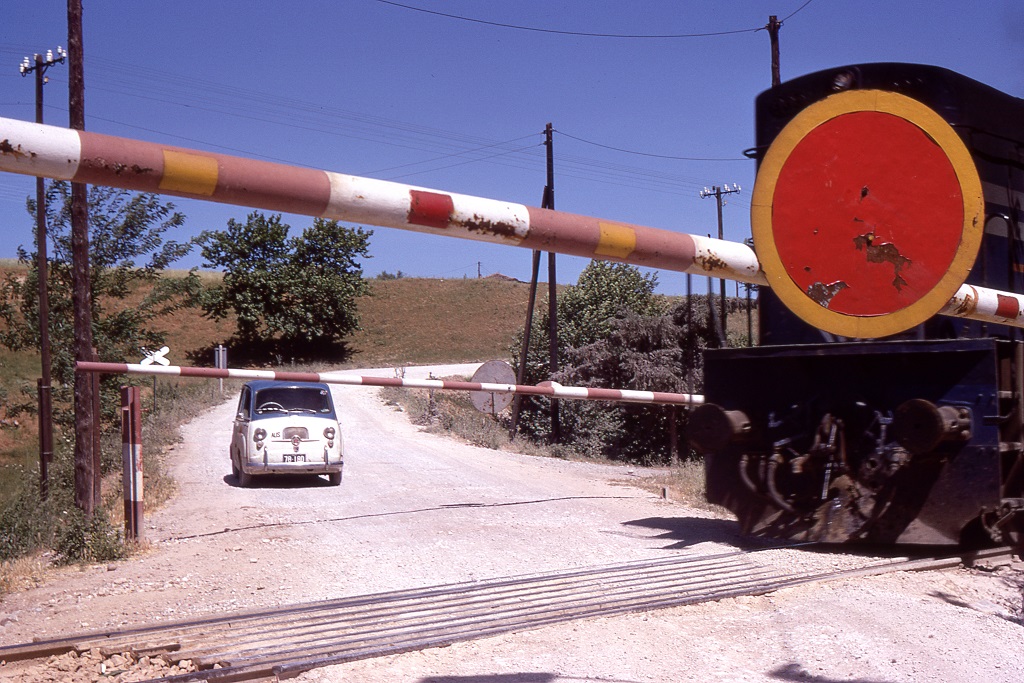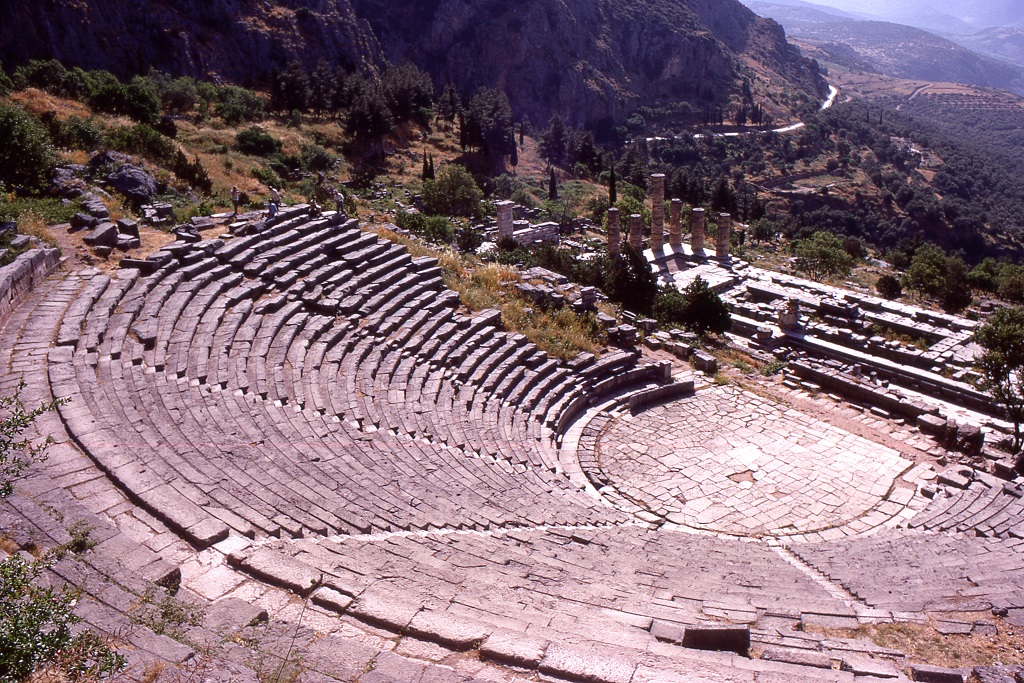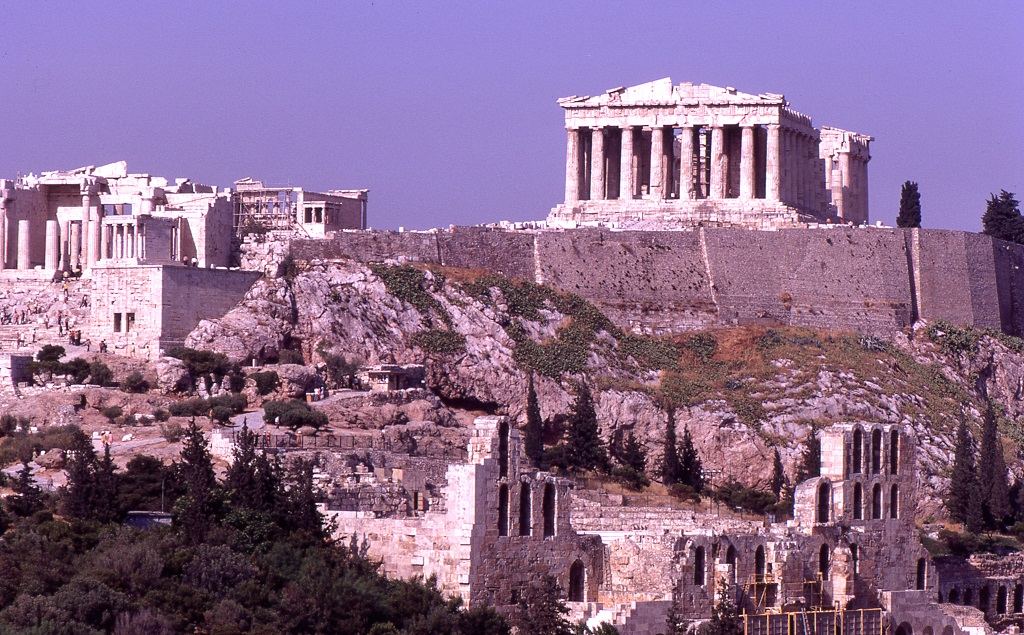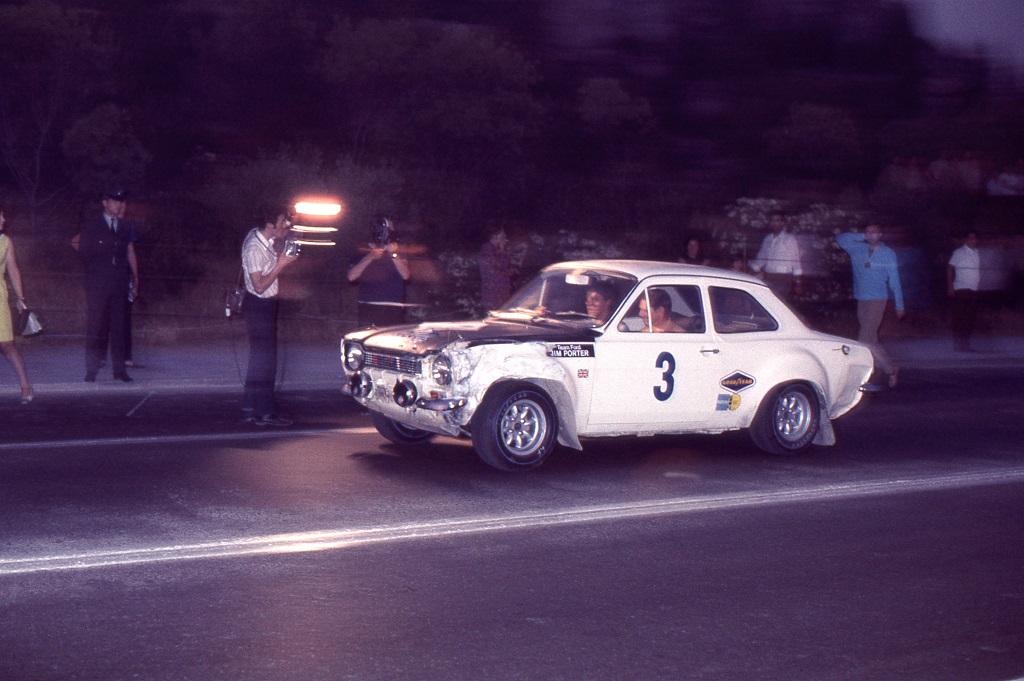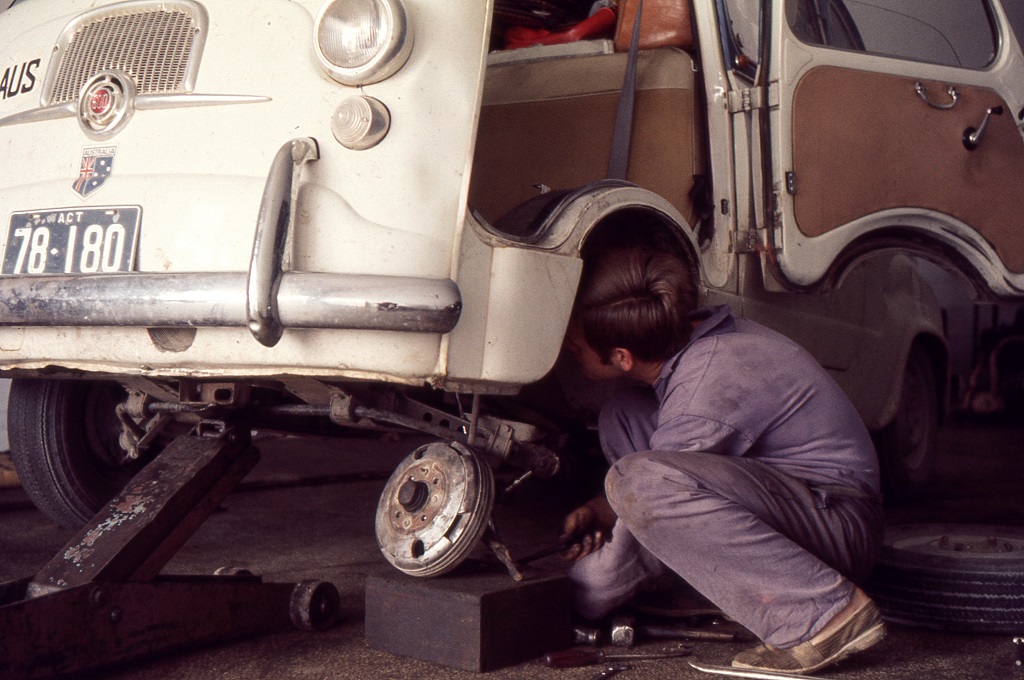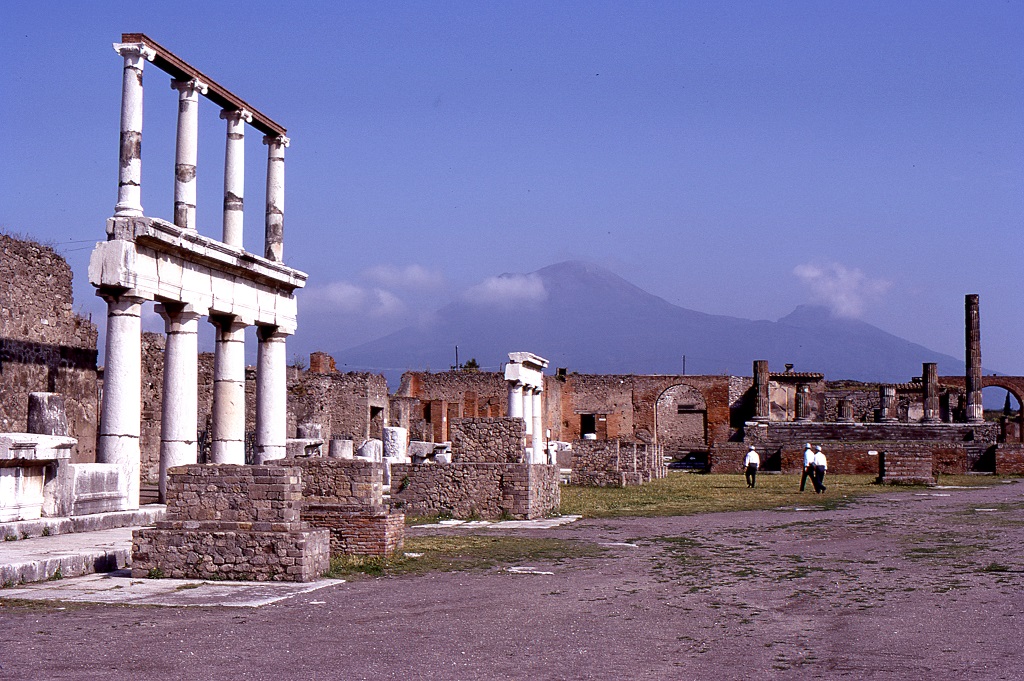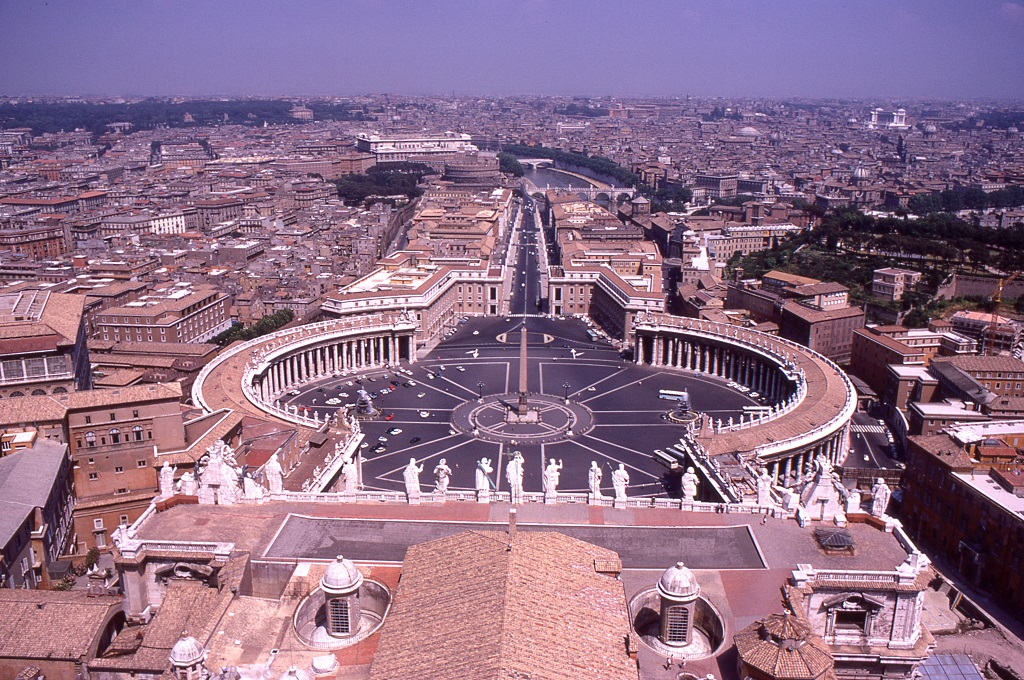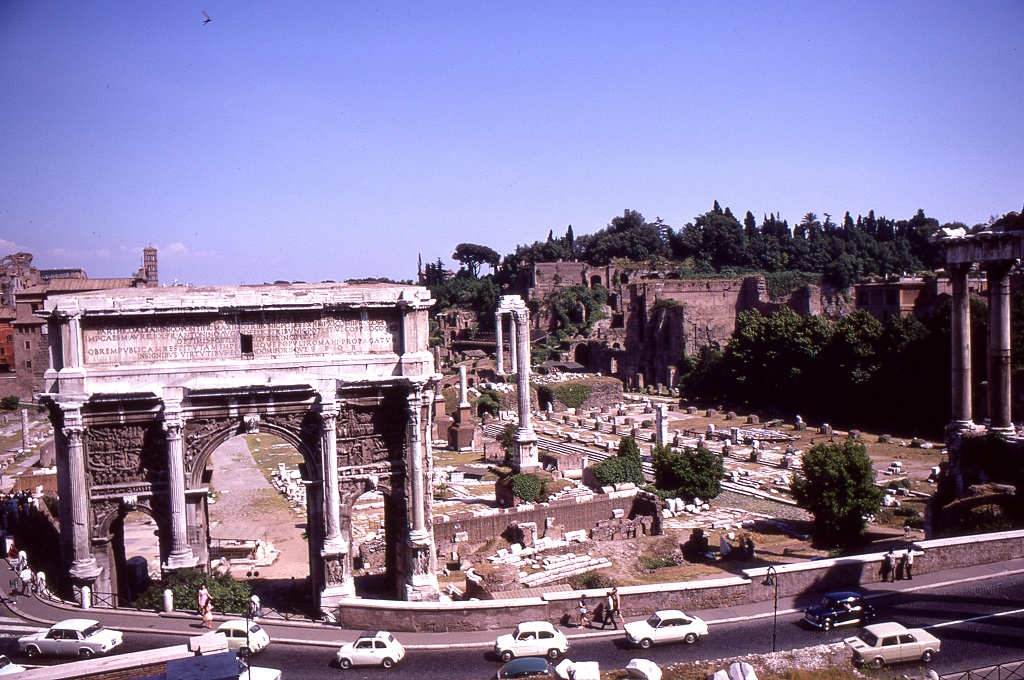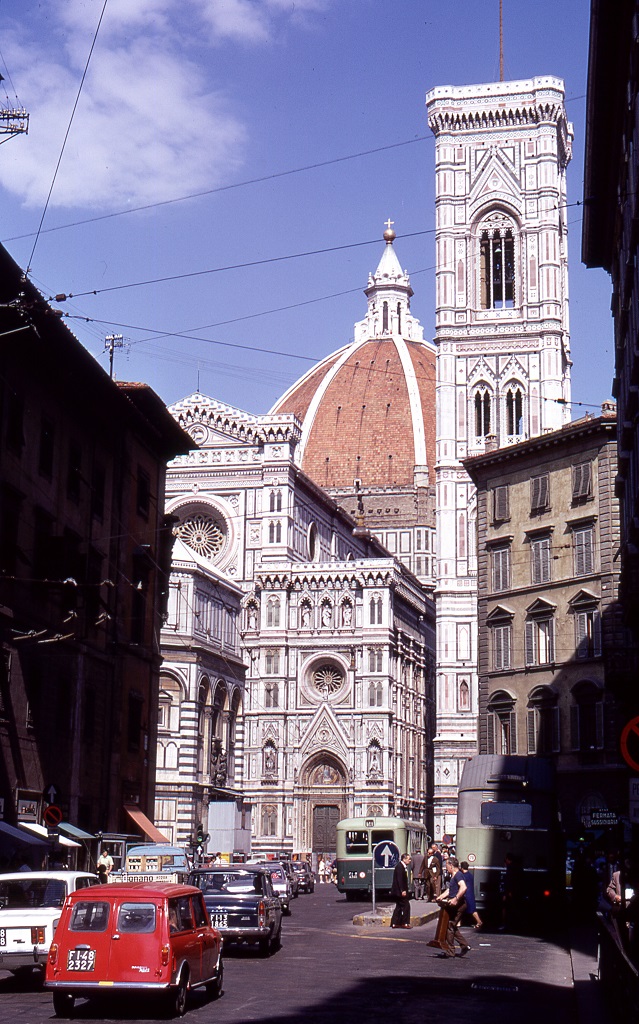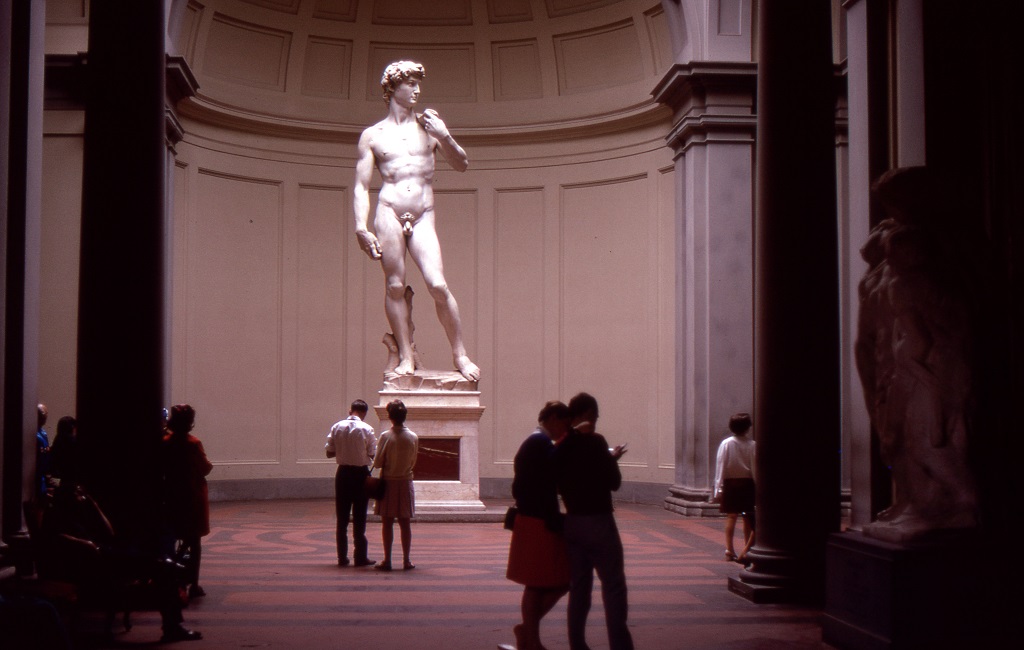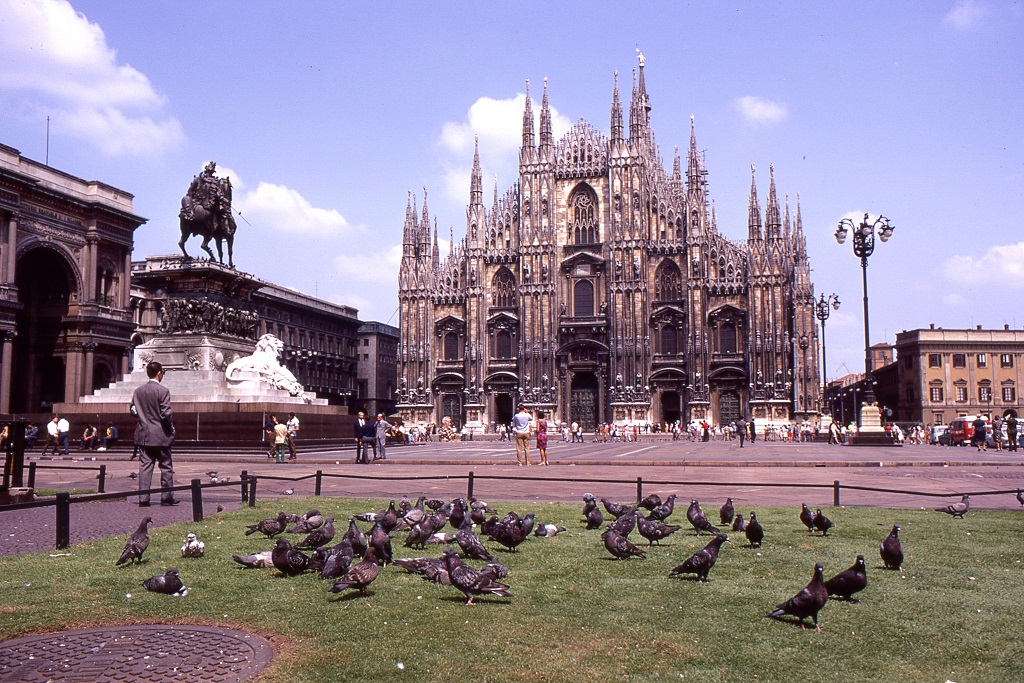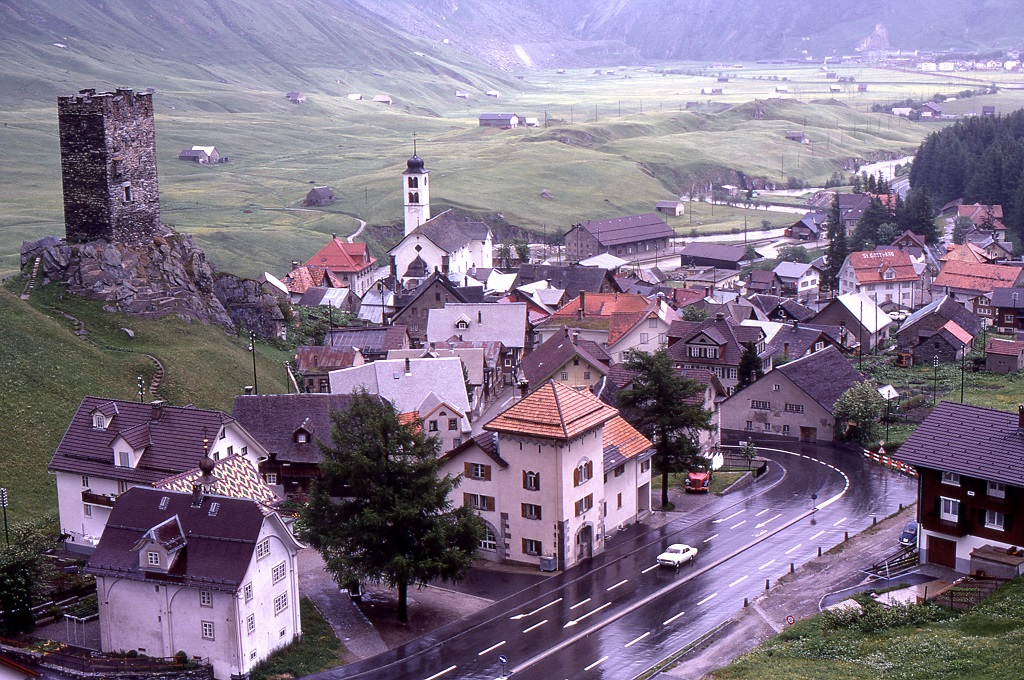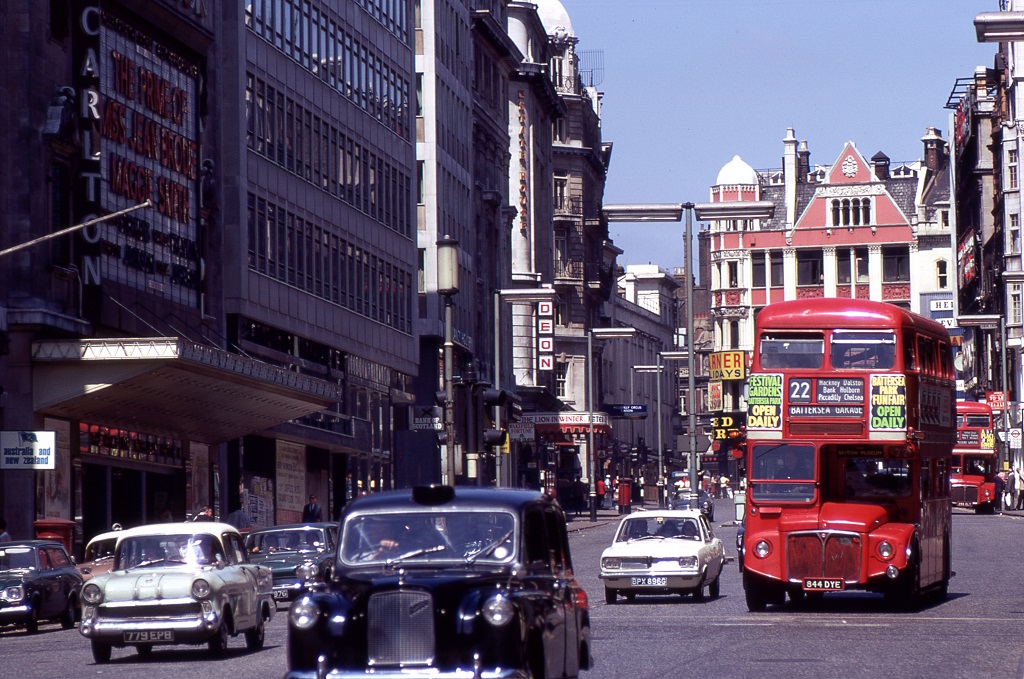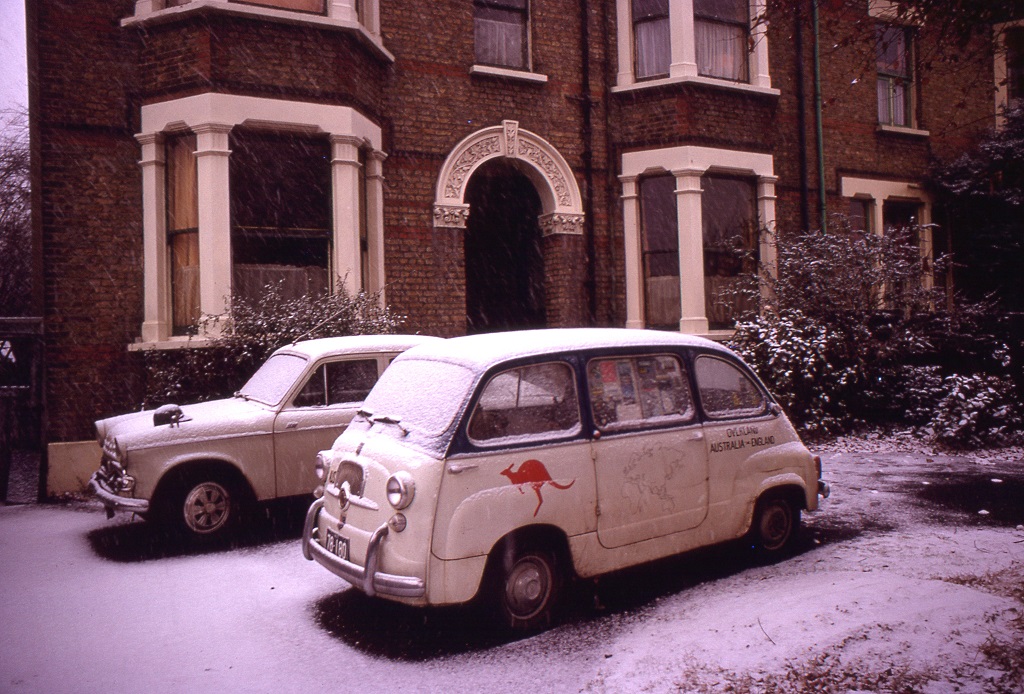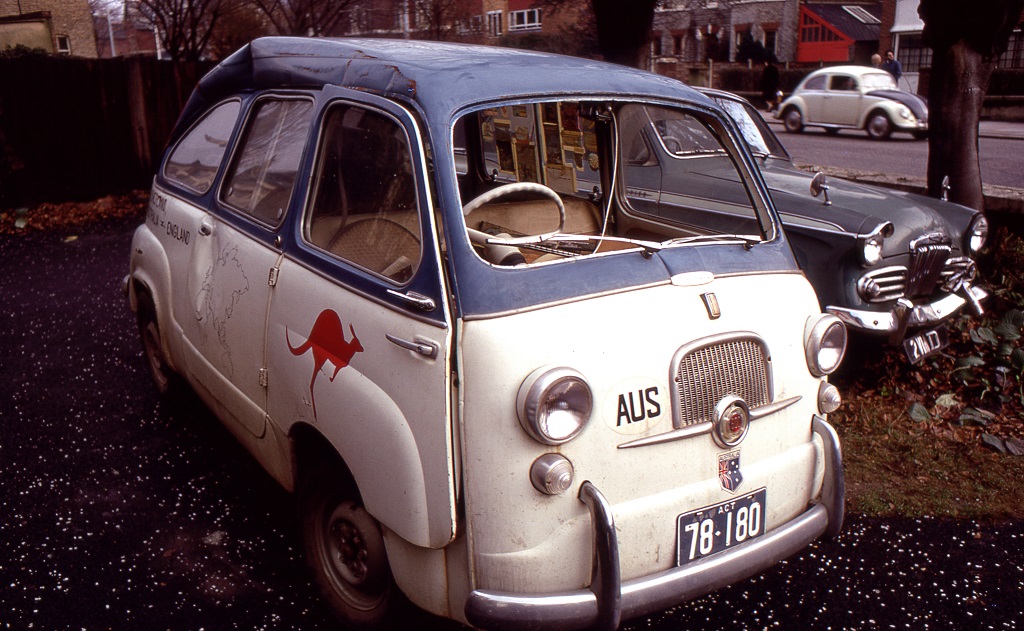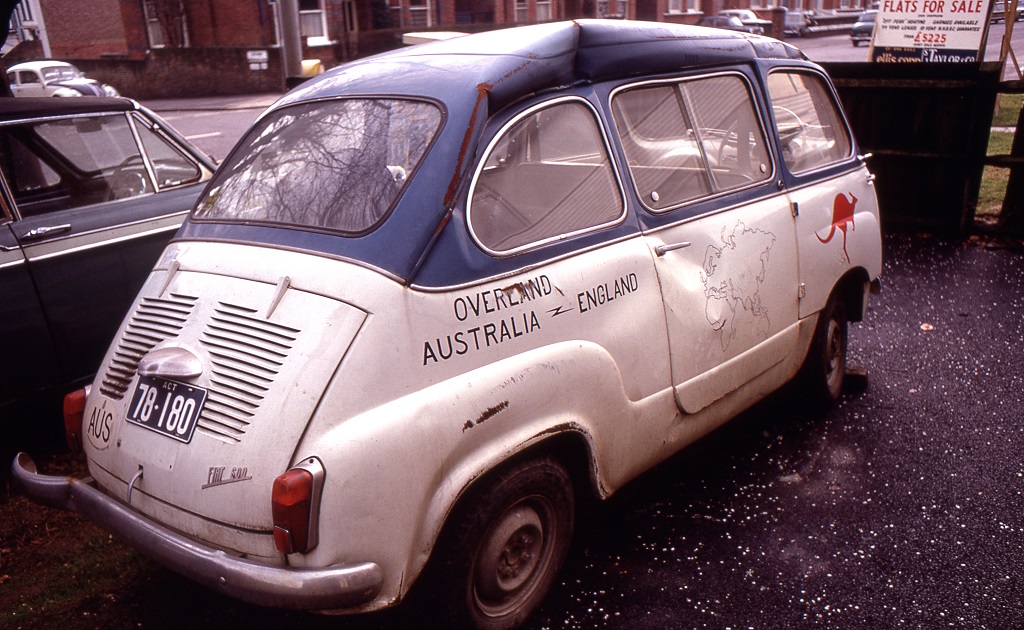Very possibly one of the best set of photos on Flickr; definitely the best set we've seen this year. Two men, a Fiat Multipla, a 14,500 mile journey, and an incredible travelogue with a bittersweet ending. If ever a film deserves to be made of a subject, it's this.
Bruce Thomas, Stuart Harper, we salute you; perusing these photos has been fantastic. But enough of us rattling on, Bruce takes up the story:
'In 1967, Bruce Thomas and Stuart Harper first met each other while working in geological mapping parties in outback Australia. We both separately had plans to drive overland from India to the United Kingdom, so we decided to join forces. Stuart had already purchased a vehicle for the journey, a 1961 model Fiat 600 Multipla which had cost just $175 (perhaps $2000 today). It was then extensively overhauled.
Ships travelling to India from Australia were rare in 1969 as the Six Day War in the Middle East had led to the closure of the Suez Canal in 1967. By booking 12 months in advance, we secured berths on the P&O cruise liner 'Oriana', which was sailing from Sydney to Colombo via Hong Kong and Singapore. We departed on 12 February 1969.
Photos in this Set were taken with a Nikon F Photomic and a Nikkormat FTn on Kodachrome II (25 ISO) or High Speed Ektachrome (160 ISO) film. Lenses used were 28mm, 50mm and 135mm Nikkors.
Some 1800 photos (50 rolls) were taken on the journey, of which 250 are presented here.'
'I was first inspired to travel the Asia Overland route in about 1960 when, as a 16 year old schoolboy, I read several books by people who made the journey in the 1950s. I finished university in 1966, then spent two years working and saving before finally setting off in February 1969. By then the trip was quite popular. Commercial bus operators had been plying the route since 1957 and in the late 1960s Penn Overland in particular was offering a very professional service. Individuals travelled in a variety of strange vehicles or used public transport.
This all came to an abrupt end when in December 1978 the Soviet Army invaded Afghanistan and in January 1979 the Shah of Iran was deposed. The route has never really been restored since. Even if peaceful conditions were to return to the region, it is doubtful if travellers would come back to the trail in the same numbers. The advent of the Jumbo Jet in the 1970s led to low cost air fares and changed the nature of international travel entirely. We are left with our memories and photographs of a truly wonderful era.'
Canberra, December 1968:
Test Drive, Mt Kosciuszko, Australia, January 1969:
Kowloon, Hong Kong, February 1969:
Ocean Terminal, Kowloon, Hong Kong, 1969:
Colombo Harbour, Sri Lanka, March 1969:
South West Coast, Sri Lanka, March 1969:
Dambulla, Sri Lanka, March 1969:
'Our trusty Fiat 600 Multipla at the crossroads. The area described by the towns of Dambulla, Polonnaruwa and Anuradhapura is known as the "cultural triangle". The languages on the mile post are Sinhalese, Tamil and, of course, English. The roads were generally bitumenised, often narrow but quite good, a legacy of former British colonial rule.'
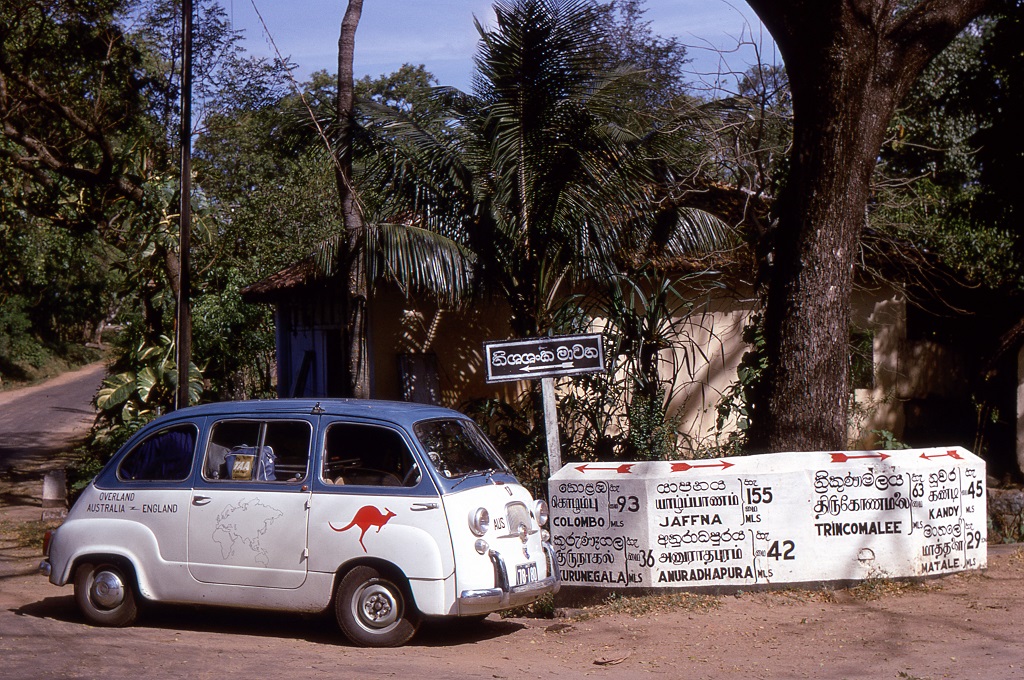
Gal Vihara, Polonnaruwa, Sri Lanka, March 1969:
'The ruined city of Polonnaruwa was capital of Sri Lanka from the middle of the 11th century until the 13th century. It was abandoned due to frequent attacks by Tamil invaders from the north. What remains are the stone ruins of religious buildings and palaces; other structures in this city of an estimated 3 million people were made of timber and are long gone. The Gal Vihara is one of the finest groups of sculpture in the world. The principal pieces are a reclining and a standing Buddha carved out of a granite cliff face. It is still an active place of worship.
Unfortunately today there is an ugly galvanised iron roof built over the site to protect it from the weather, despite it having survived exposed for over 800 years in pristine condition.'
Ruwanweliseya, Anuradhapura, Sri Lanka, March 1969:
'Anuradhapura was the capital of Sri Lanka from 4th century BC until 11th century AD. It was abandoned due to repeated attacks by Tamil armies from the north, and a new Sinhalese capital was established at Polonnaruwa. It is interesting to note that conflict between northern Tamils and the majority Sinhalese has been going on for some 2000 years.
The 300ft tall Ruwanweliseya is one of several large Buddhist stupas in the city and has recently been restored.'
Talaimannar, Sri Lanka, March 1969:
Rameswaram, India, March 1969:
'The ferry across Palk Strait from Sri Lanka went to Rameswaram; it had formerly gone to Dhanushkodi but that settlement had been totally destroyed by a cyclone in 1964 with a loss of over 1800 lives.
Rameswaram did not have a jetty. Consequently our car had to be offloaded onto a platform made of two small barges lashed together which brought it ashore. It was then rolled off onto a small ramp which led to the beach.'
Meenakshi Temple, Madurai, India, March 1969:
Mysore, India, March 1969:
Kerala, India, 1969:
Mandu, India, March 1969:
The 'Palace of the Winds' Jaipur, India, April 1969:
Rajasthan, India, April 1969:
Taj Mahal by moonlight, Agra, India, April 1969:
The All-India War Memorial arch, New Delhi, India, April 1969:
Bodhnath, Kathmandu, Nepal, April 1969:
'In 1969, it was a two week walk into Everest Base Camp in order to see the tallest mountain in the world. The alternative was a dawn flight from Kathmandu in a high winged Fokker Friendship which, on a good day, gave a magnificent view of the Himalayan mountain range. Mt Everest is the tallest peak, right of centre. The flight cost US$16.'
Jamrud, Pakistan, April 1969:
'The entry to the Khyber Pass is at Jamrud, where a toll is charged. The road is closed at night because the government cannot guarantee safe passage through these lawless tribal areas on the Northwest Frontier.'
Khyber Pass, Pakistan, April 1969:
Kabul River, Afghanistan, April 1969:
Hindu Kush mountains, Afghanistan, April 1969:
Kabul, Afghanistan, April 1969:
'We booked into the cheap but cheerful Hotel Habib, close by the Khyber Restaurant which served fine, European-style food. This was the view from our window.
There was a clear Russian influence in Kabul. The most common car on the road was the Volga and the shops were full of other Russian goods.'
'On leaving Herat, we continued to follow the concrete Russian highway. It seemed to head more to the north than to the west towards Iran. Soon we were stopped by a roadblock. We discovered that the Russians had continued their road north to the USSR border, which they would subsequently use when they invaded Afghanistan in 1978.
We retreated to the outskirts of Herat where we eventually found a less impressive American bitumen road which headed west to Iran.
This mud brick windmill sat silently in the desert near the Iranian border.'
Afghanistan/Iran Border, April 1969:
Shrine of Imam Reza, Mashhad, Iran, April 1969:
'There are two routes from Mashhad to Teheran. One goes directly west through the Dasht-e-Kavier desert; the alternative one goes slightly north along the coast of the Caspian Sea. Both involved some notorious 'horror stretches' of gravel roads. We chose the Caspian route as it was more interesting, although it involved a steep climb over a high pass through the Elburz Mountains near Mt Demavand (18607ft, 5671m), the highest mountain in the Middle East.
Our little Fiat struggled gamely, at times down to first gear, and finally delivered us safely in Teheran where we stayed at the Amir Kabir Hotel, a cheap establishment popular with overland travellers.'
Shrine of Fatima, Qom, Iran, May 1969:
The Chubi Bridge was built by Shah Abbas II in 1665 to help irrigate his palace gardens.
Tomb of Cyrus, Iran, May 1969:
Persepolis, Iran, May 1969:
'Visitors from bygone times were very free with their graffiti which is scored into the stone of Persepolis. Stanley of the New York Herald appears to be the one who found David Livingstone in darkest Africa, greeting him "Dr Livingstone, I presume".'
Rustam's Pictures, Iran, May 1969:
Shiraz, Iran, May 1969:
'A grease and oil change and we were back on the road.
The Fiat had developed an oil leak from the engine, possibly a crankshaft oil seal had failed. We did not try to get it fixed as oil (and petrol) was incredibly cheap and we had seen no Fiat 600s in Iran. We assumed spare parts would therefore be a problem.'
'At the Bazargan border post with Turkey there was a car boneyard where vehicles which had failed on the overland route could be dumped in 'no man's land'. This would apparently allow the cash surety required on a vehicle's Carnet to be refunded. From left to right, a French-registered Renault, a German Hanomag and a British Austin(?) ex-military vehicle. There were also similar car graveyards on the Iran/Afghanistan and Afghanistan/Pakistan borders.'
'From Askale we steadily climbed steeply from 6000ft to 8500ft, according to our car's altimeter. There were two steep pinches which the car failed to climb on the first attempt, even in first gear. With the passenger walking and the engine screaming in first gear, it still took three attempts at each hill to struggle over. We then descended into Bayburt.'
Bayburt, NE Turkey, May 1969:
'We continued our climb over the Zigana Pass, reaching a maximum of 7000ft. The car slowly but surely made the grade in first gear, without interruption this time. The country was strikingly beautiful.'
Black Sea Coast, Turkey, May 1969:
'There was no bridge across the Bosphorus in 1969. We used the car ferry to cross into Europe.'
'The Blue Mosque, also called the Mosque of Sultan Ahmet, was completed in 1617. It was designed to outdo the nearby Byzantine Christian Basilica of Aya Sofya.' (below):
Lone Pine cemetery, Gallipoli, Turkey, May 1969:
'The Fiat had been leaking significant amounts of oil from the front of the engine, in the vicinity of the crankshaft. Now in Greece, for the first time since Pakistan we saw Fiat 600s on the road. Knowing that spare parts would be available, we put the car in for repairs in Thessaloniki and out came the tiny 633cc engine. The front crankshaft oil seal was replaced and a new distributor was fitted. The old one had been playing up since India.'
'Thermopylae is an historic location where a small band of brave Spartans confronted and delayed a large Persian army in 480 BC. A monument celebrates the event.'
Rail Crossing, Northern Greece, May 1969:
Amphitheatre, Delphi, Greece, May 1969:
Acropolis, Athens, Greece, May 1969:
'Our time in Athens coincided with the finish of the Acropolis Rally on 31st May.'
Corinth Ship Canal, Greece, June 1969:
Car Ferry to Otranto (Italy), Greece, June 1969:
'While servicing the car in Greece, we discovered that the rough roads in the Middle East had driven the front suspension literally through the floor of the car under the passenger seat. Now in the land of Fiats, we soon found a mechanic who would literally weld the shattered floorpan back together like a jigsaw puzzle. We hoped the repairs would last until London.'
Pompeii, Italy, June 1969:
Rome, Italy, June 1969:
Pisa, Italy, June 1969:
Duomo, Florence, June 1969:
David, Florence, June 1969:
Milan, June 1969:
St Gotthard Pass, Switzerland, June 1969:
Mercedes Museum, Stuttgart, Germany, June 1969:
Car Ferry, Ostende, Belgium, June 1969:
Trafalgar Square, London, 1969:
'Summer had arrived in London for the end of our Journey of a Lifetime. We arrived in London on 29th June 1969. The journey had taken 20 weeks and we had covered 14,500 miles (23, 200 km) since Colombo.'
Haymarket, London, June 1969:
Wimbledon, London, January 1970:
'In early [February]
1970, the Fiat was involved in an accident, rolling on its side. It was a sad end to such a gallant little vehicle.'
'It was not practicable to repair the car. It was sold to a wrecking yard for just 5 pound.'
FIN

